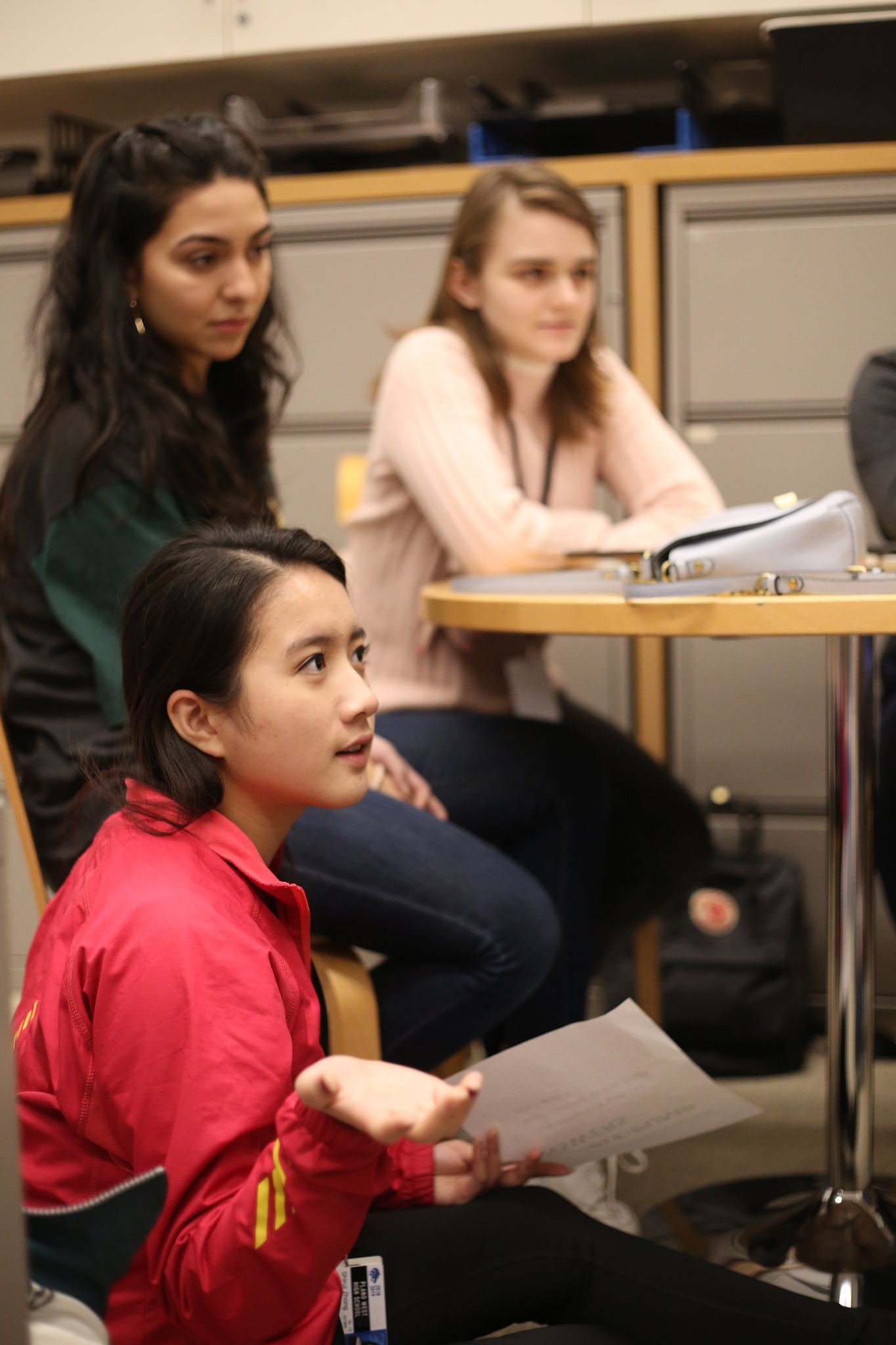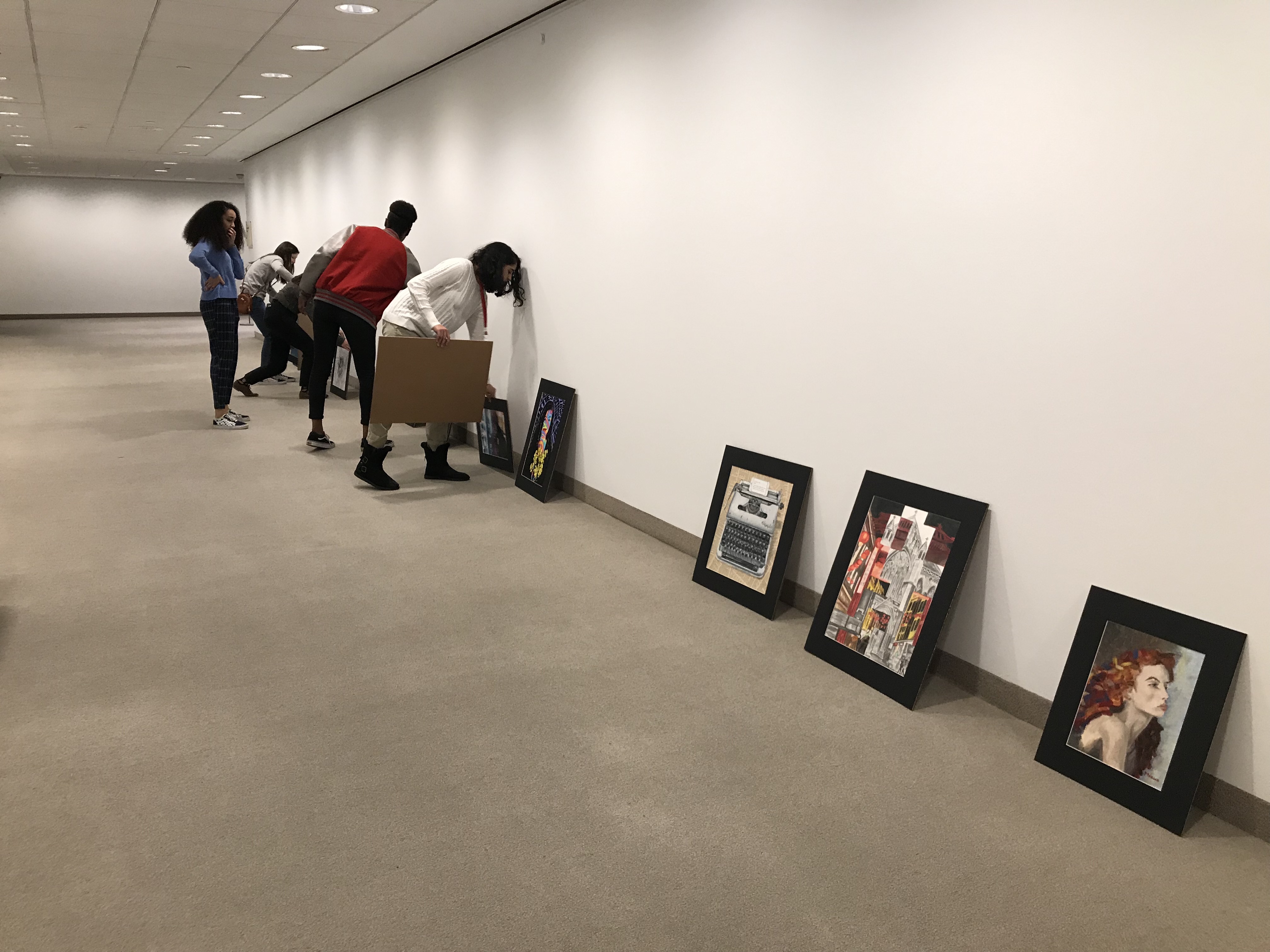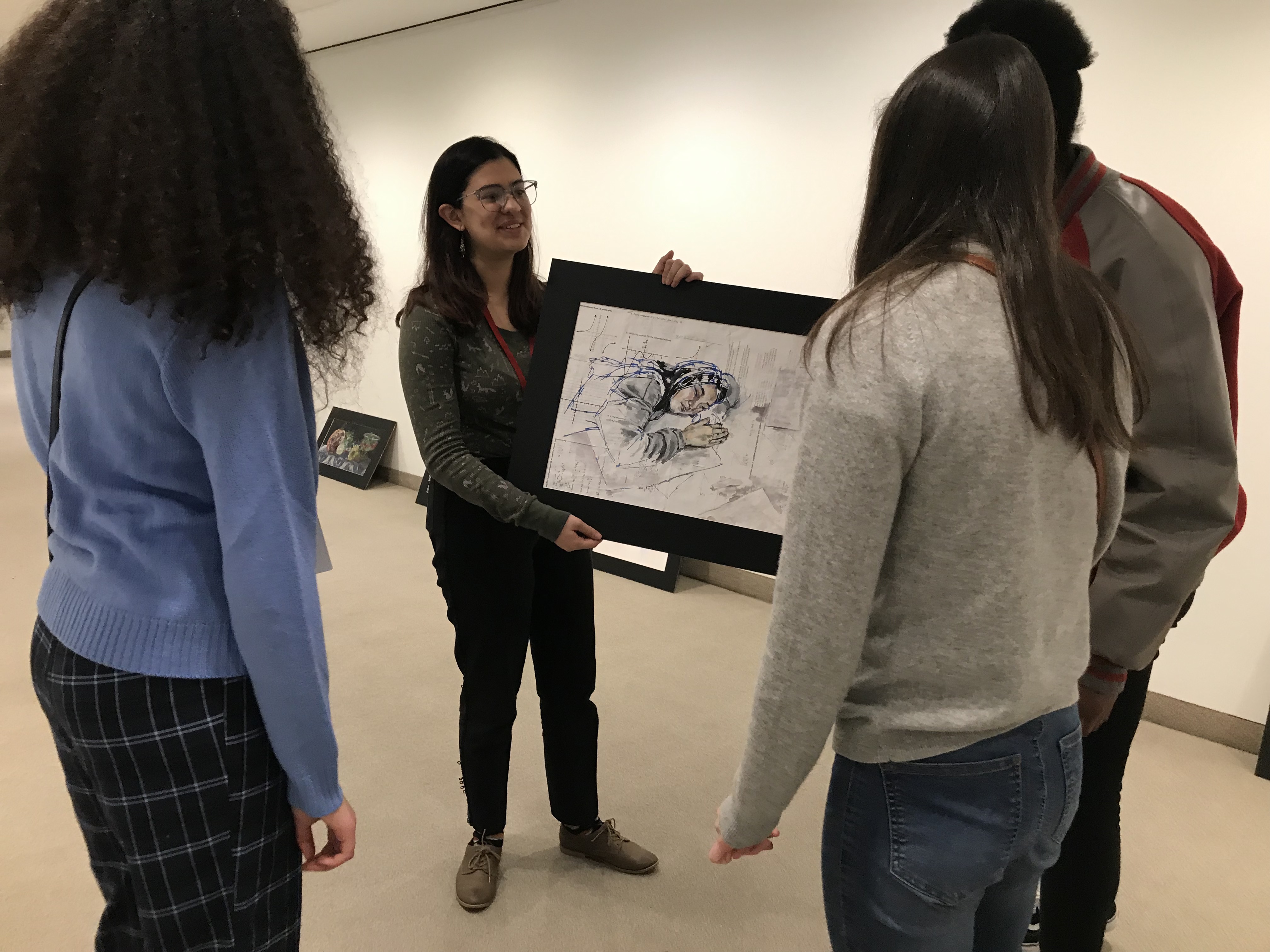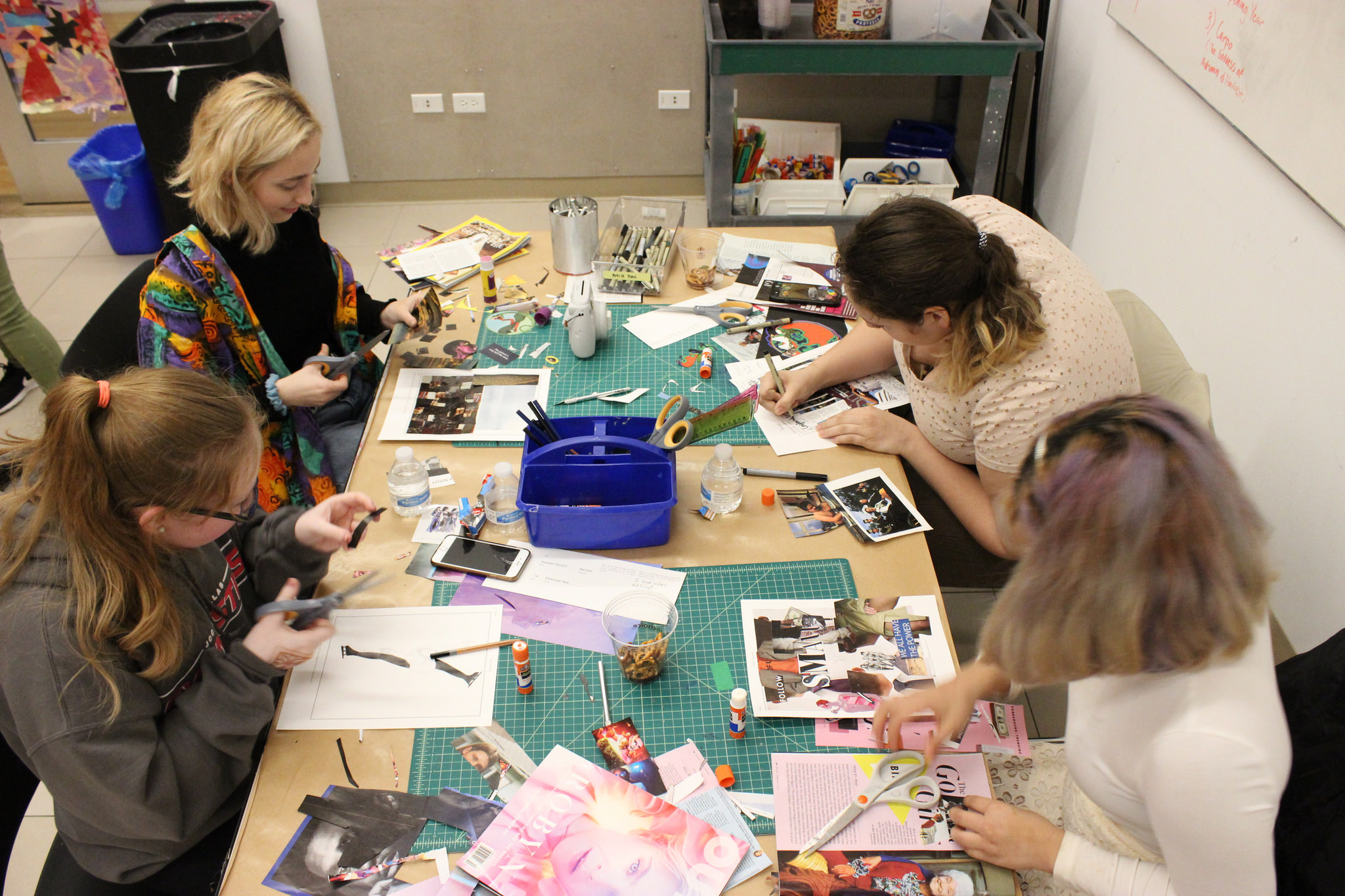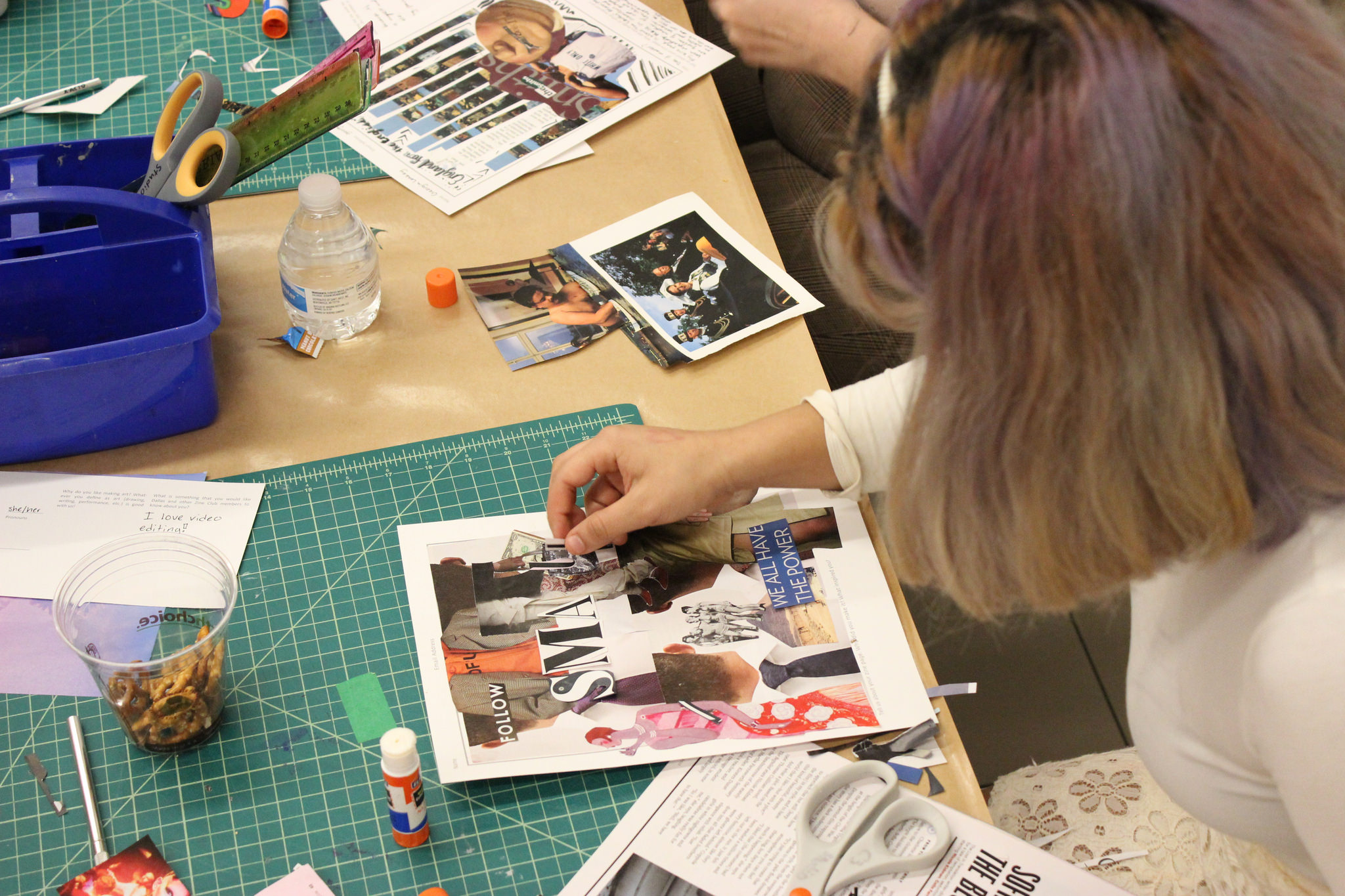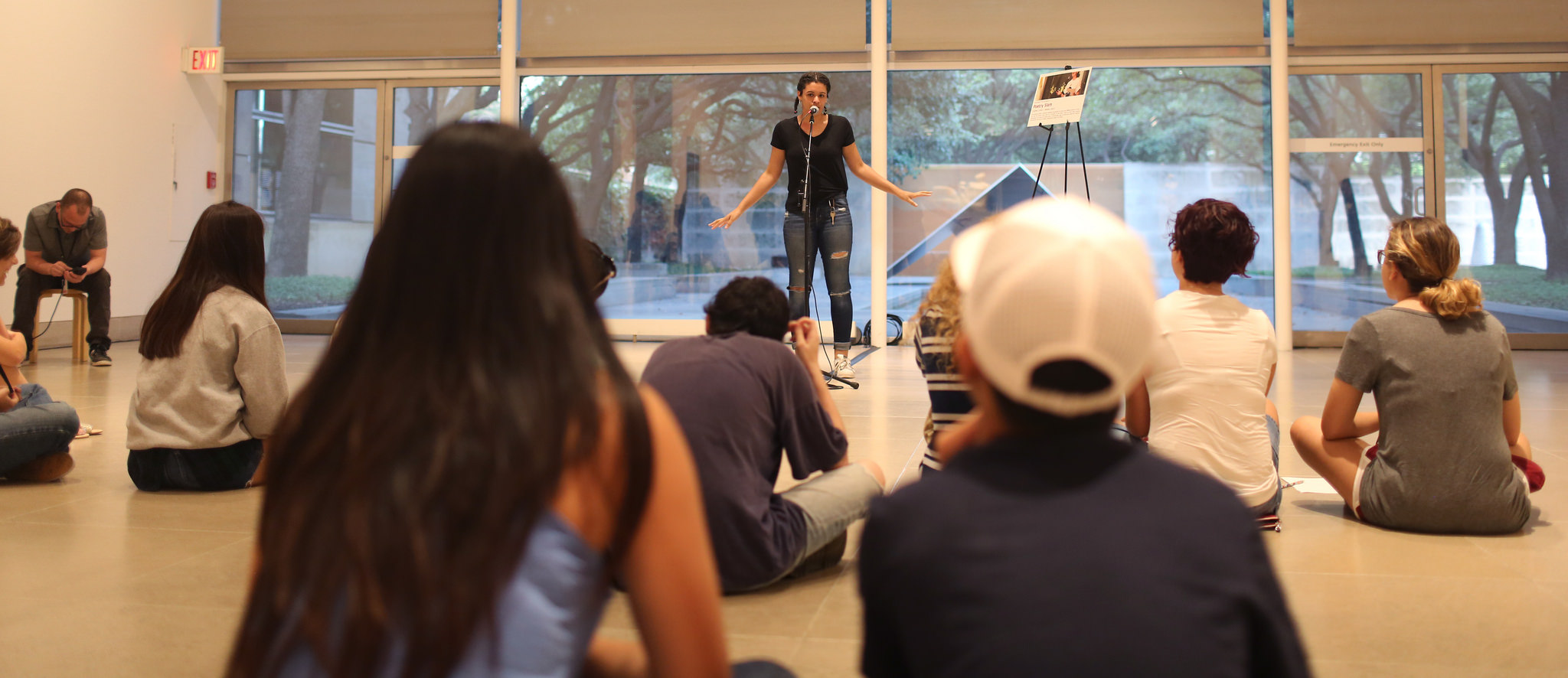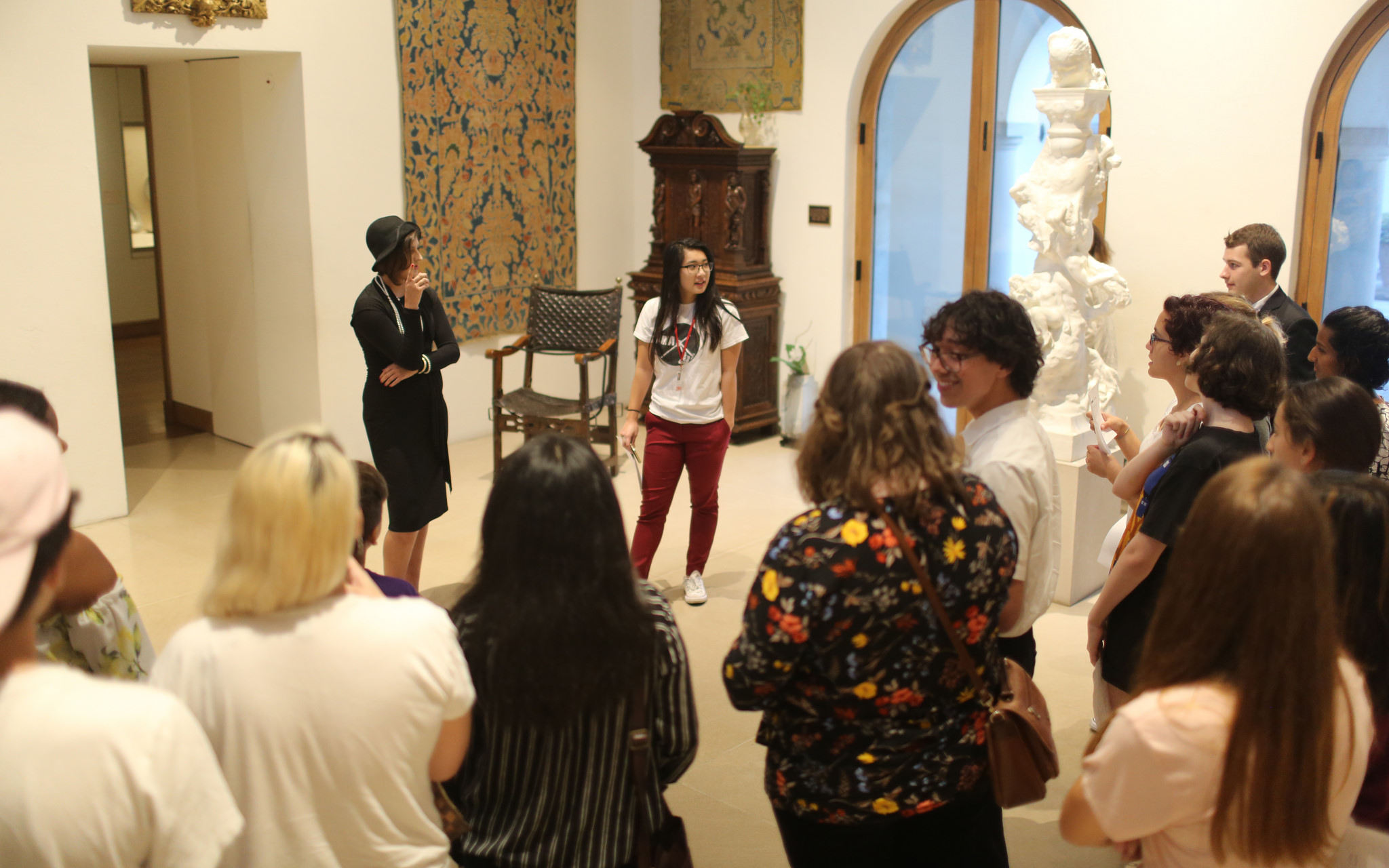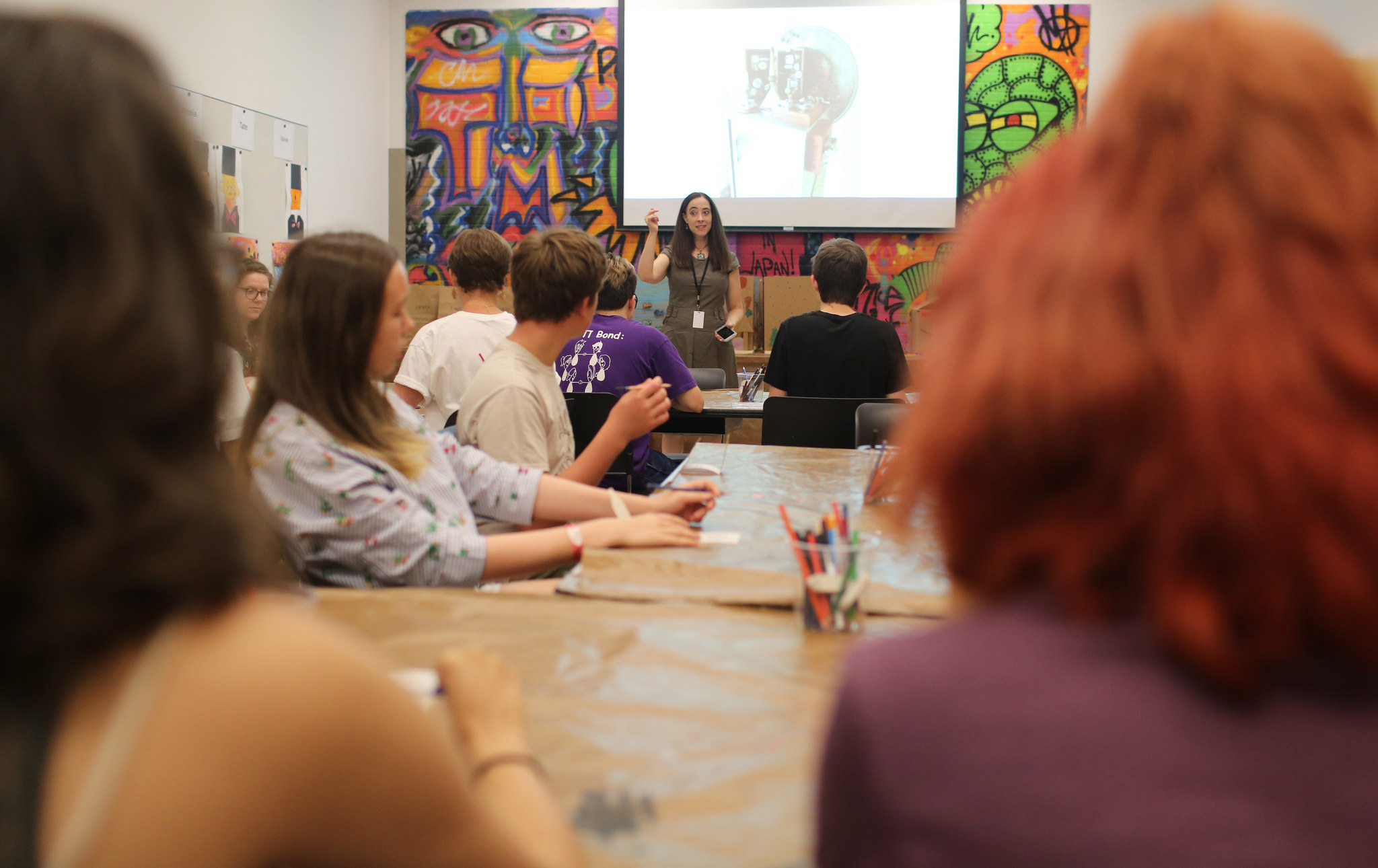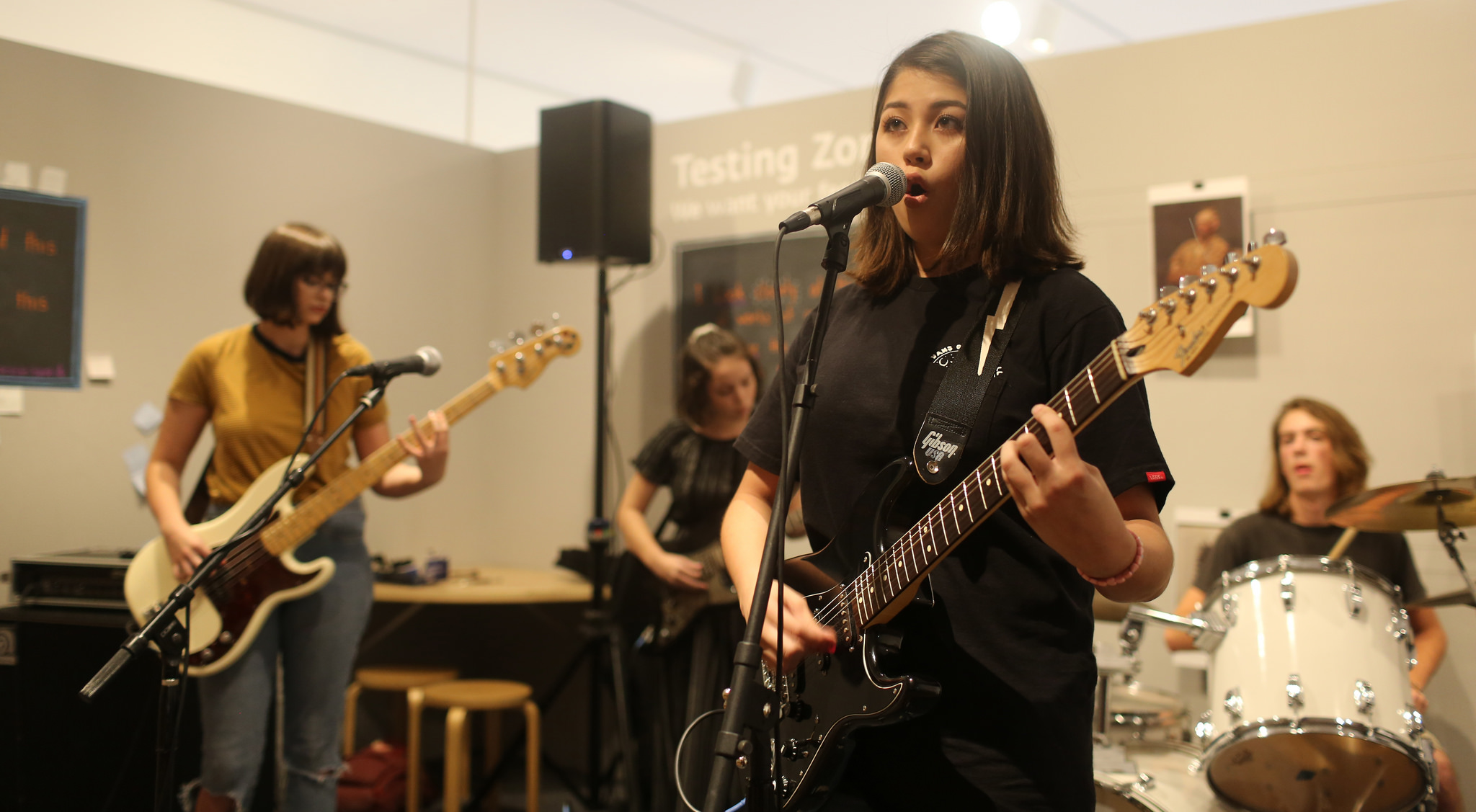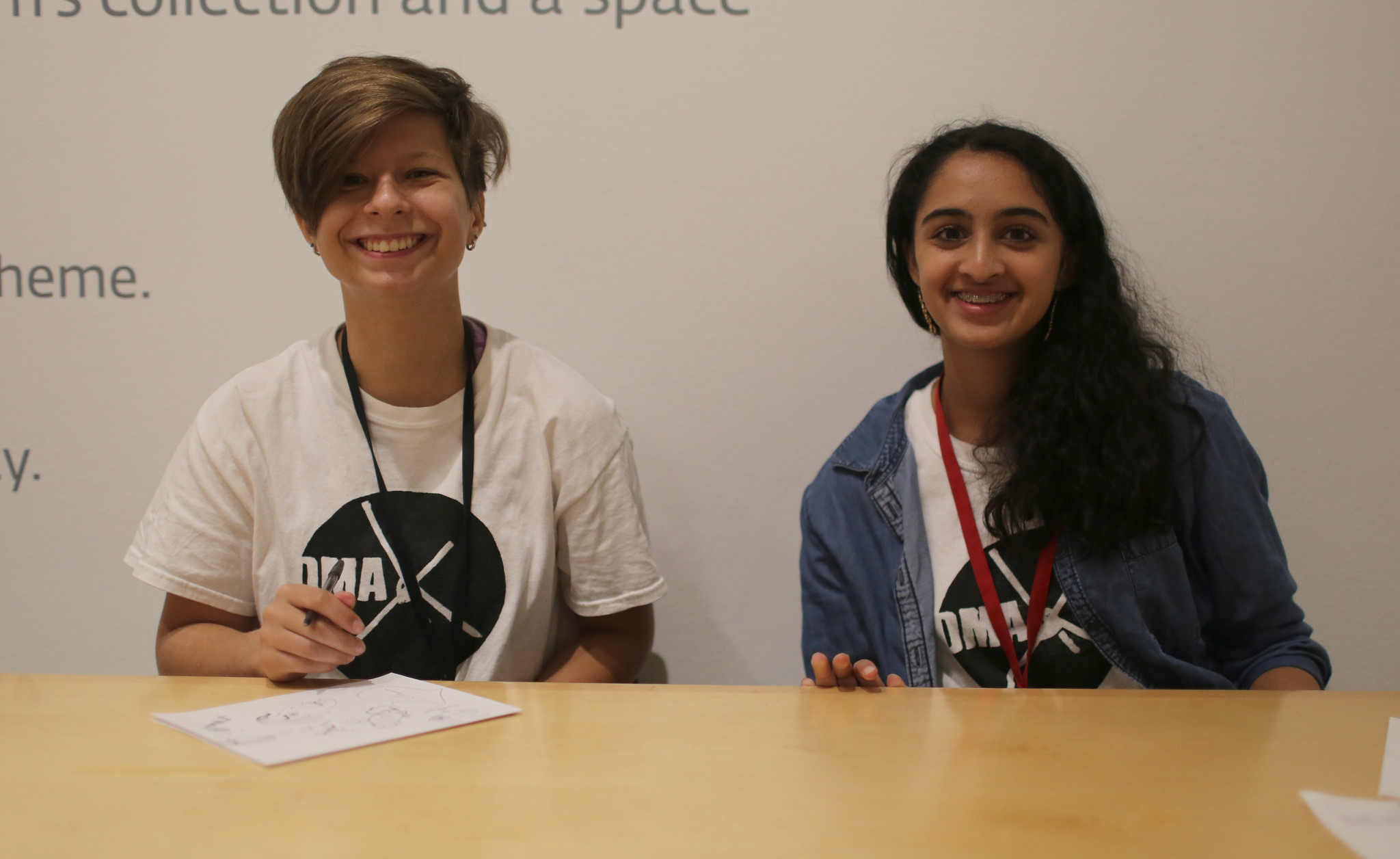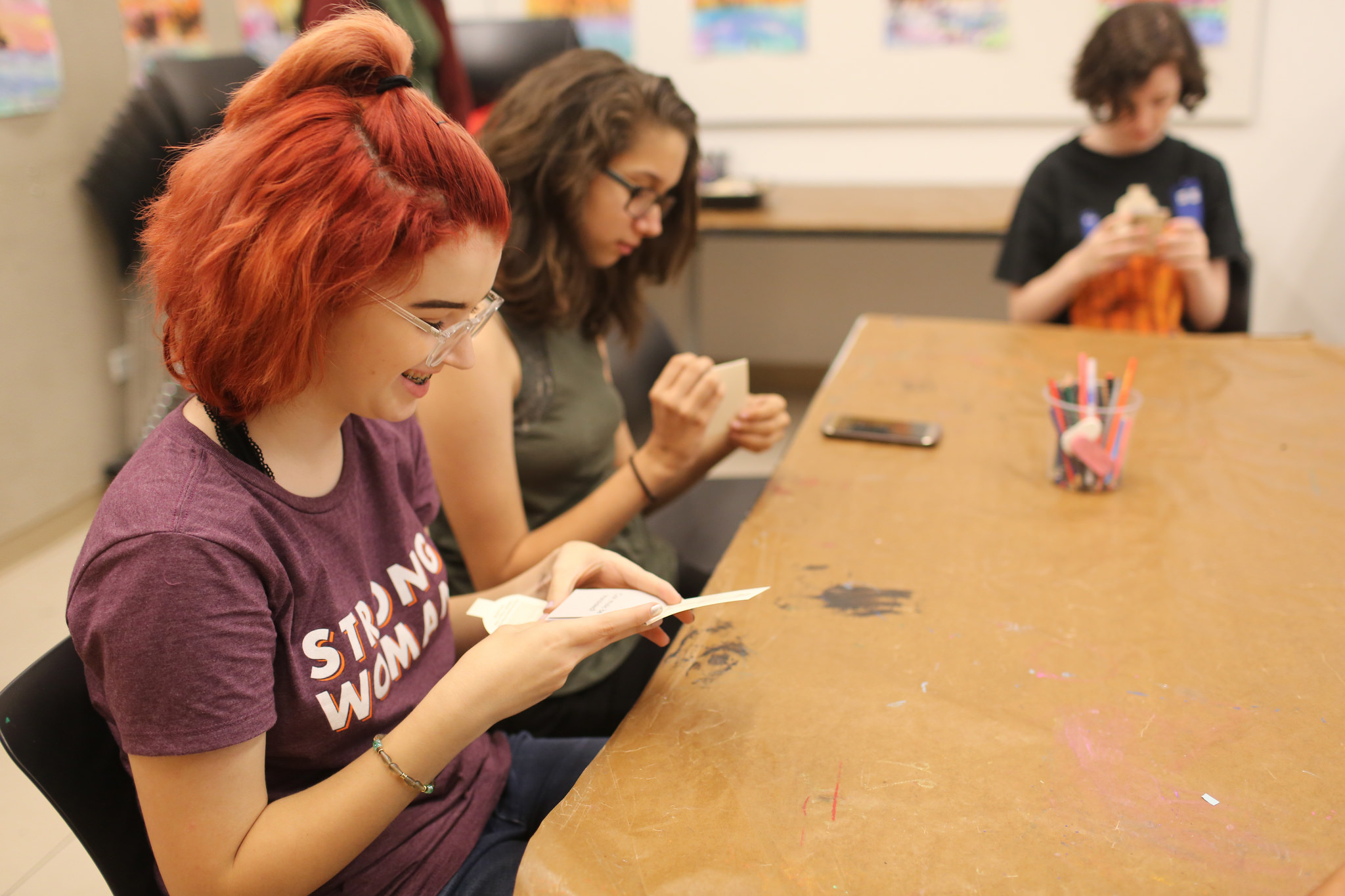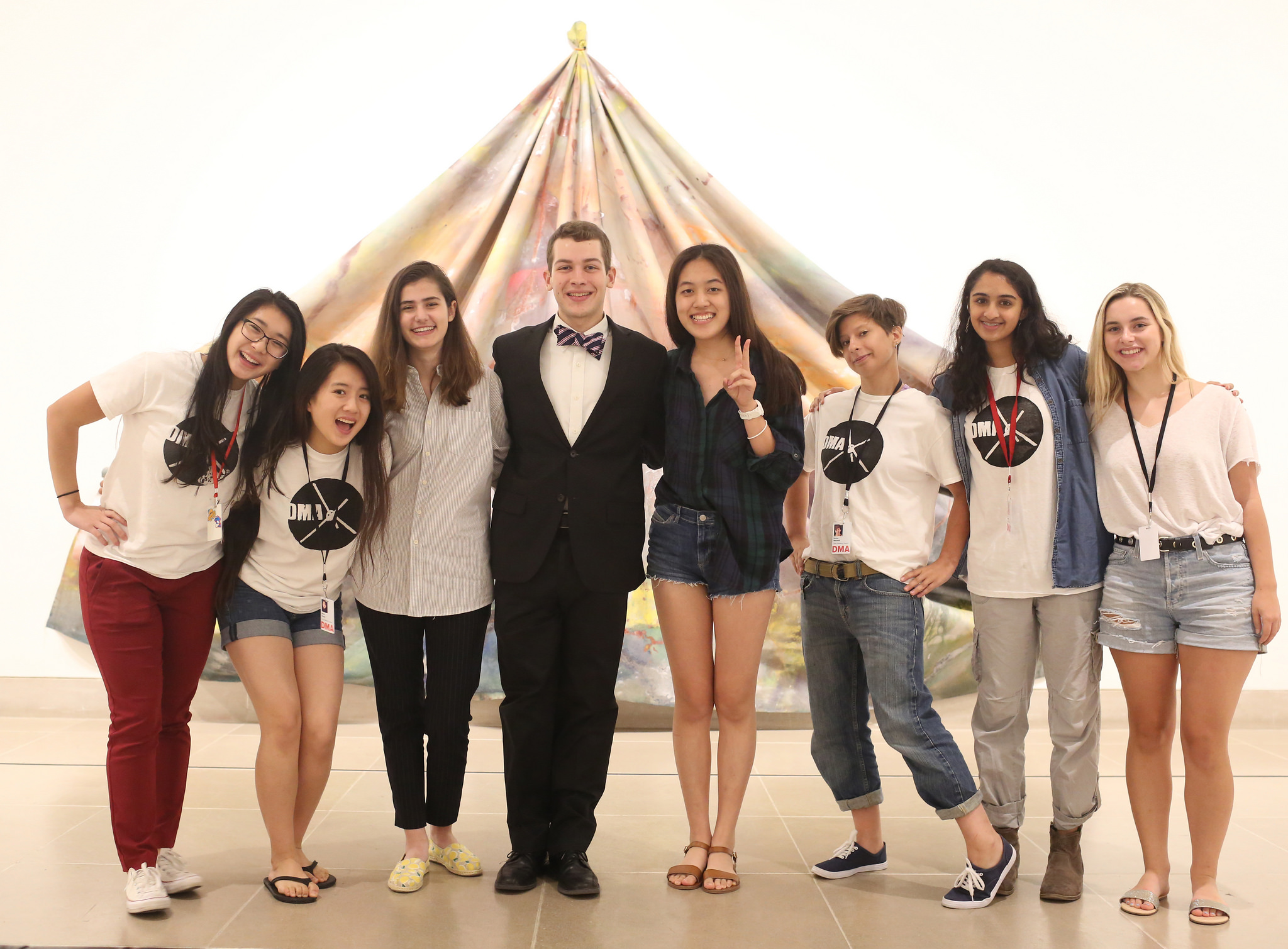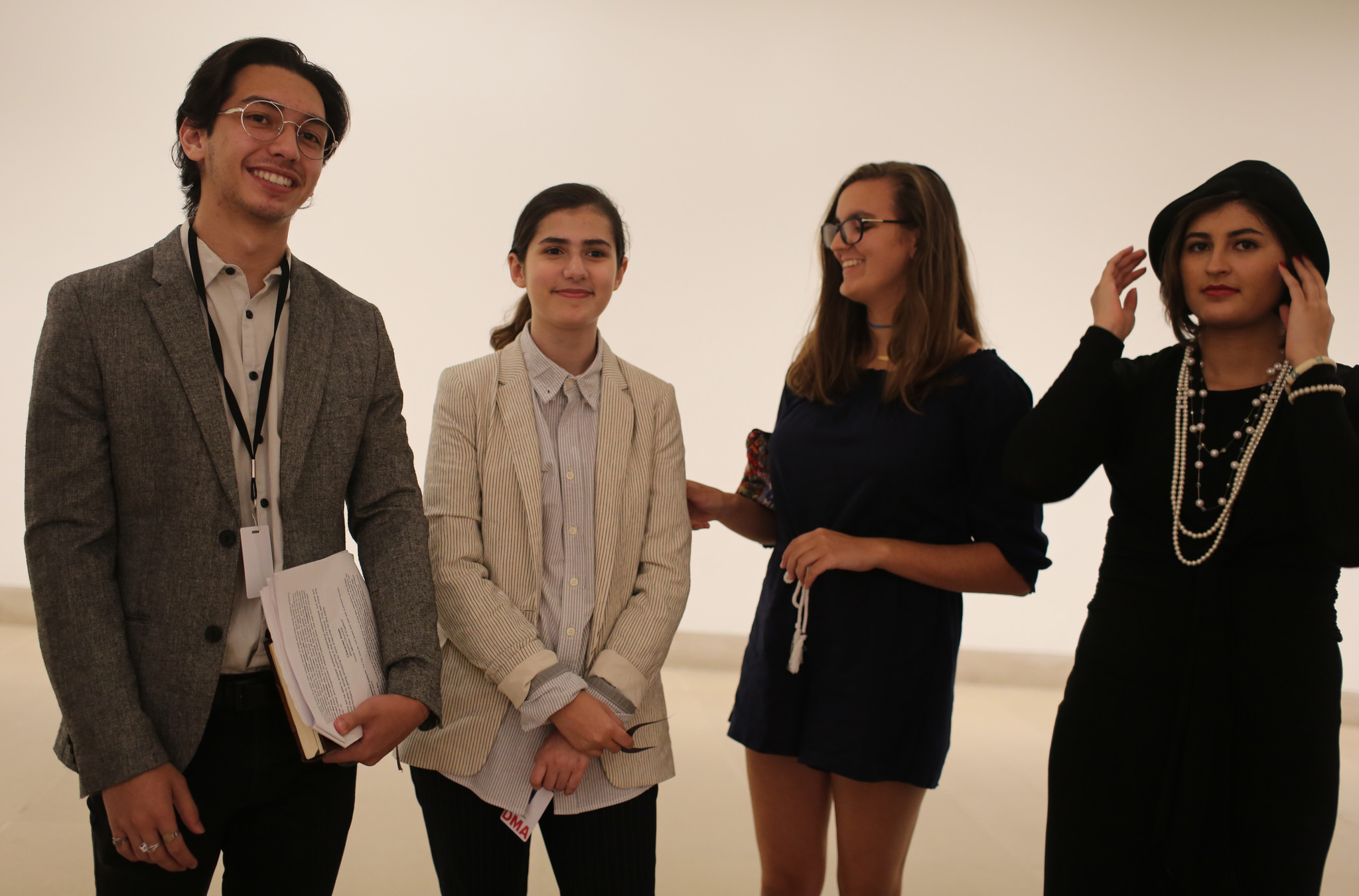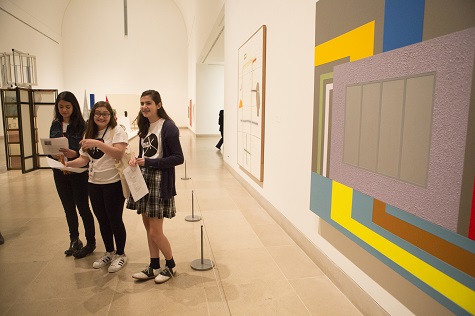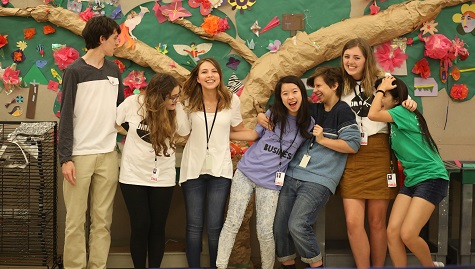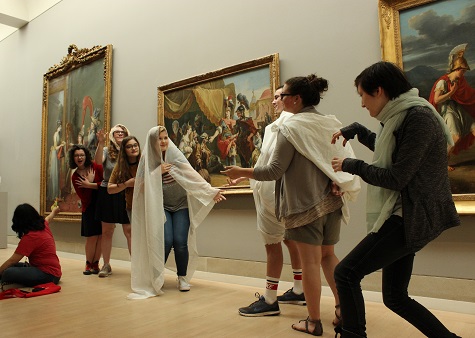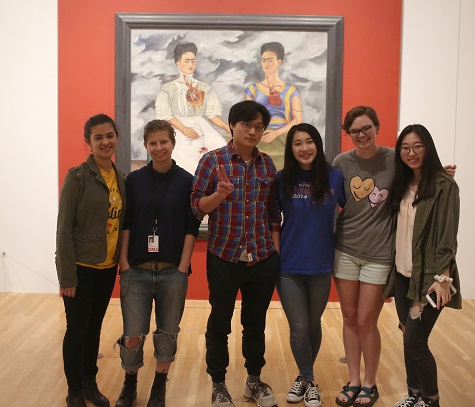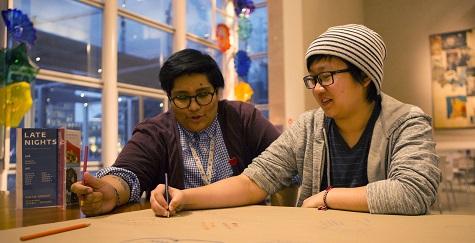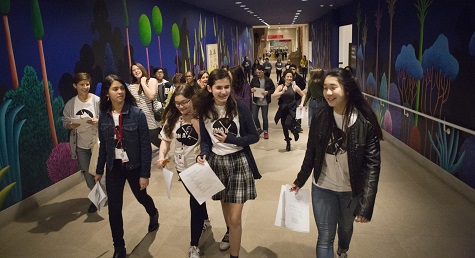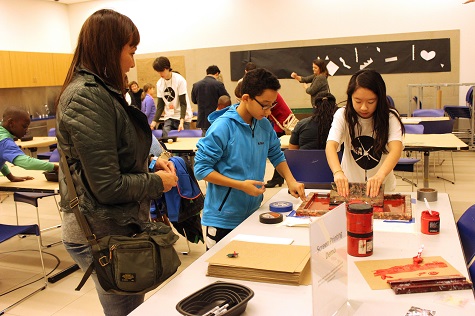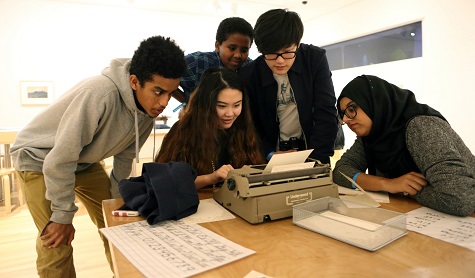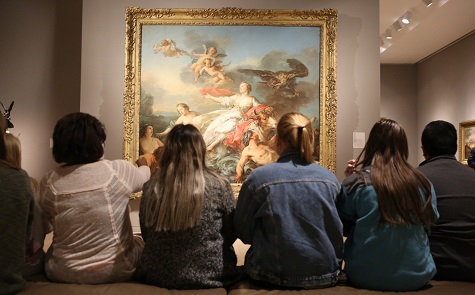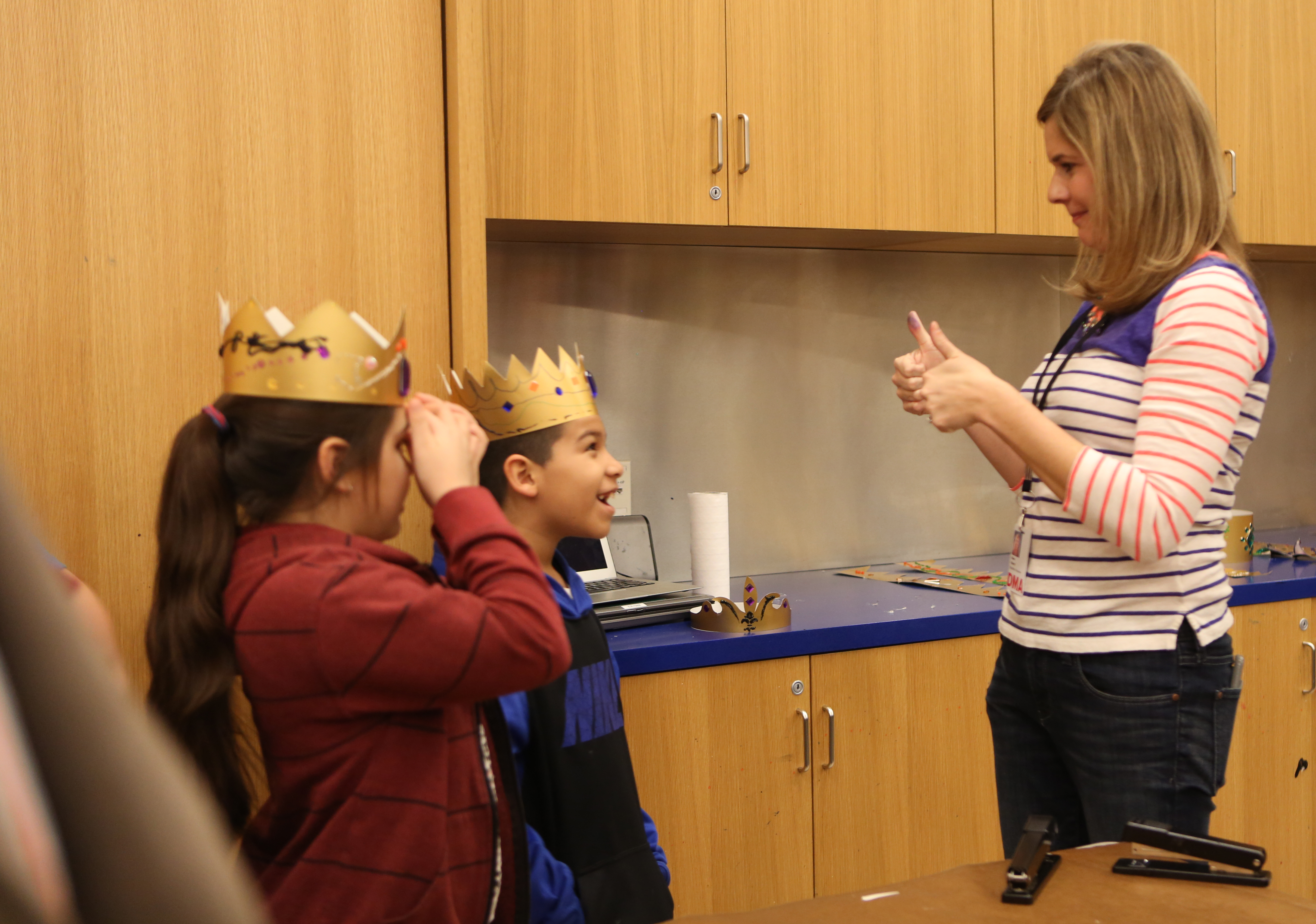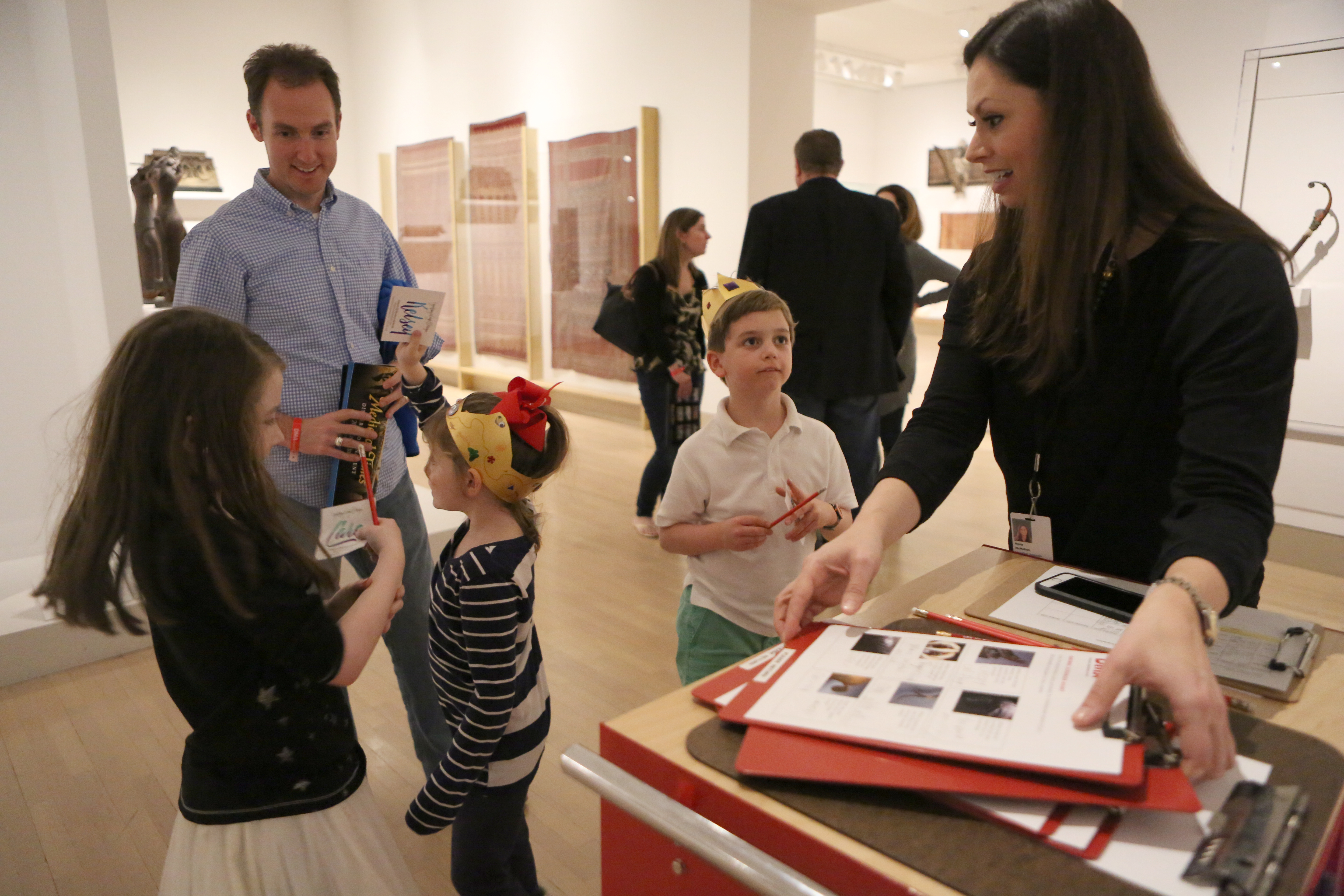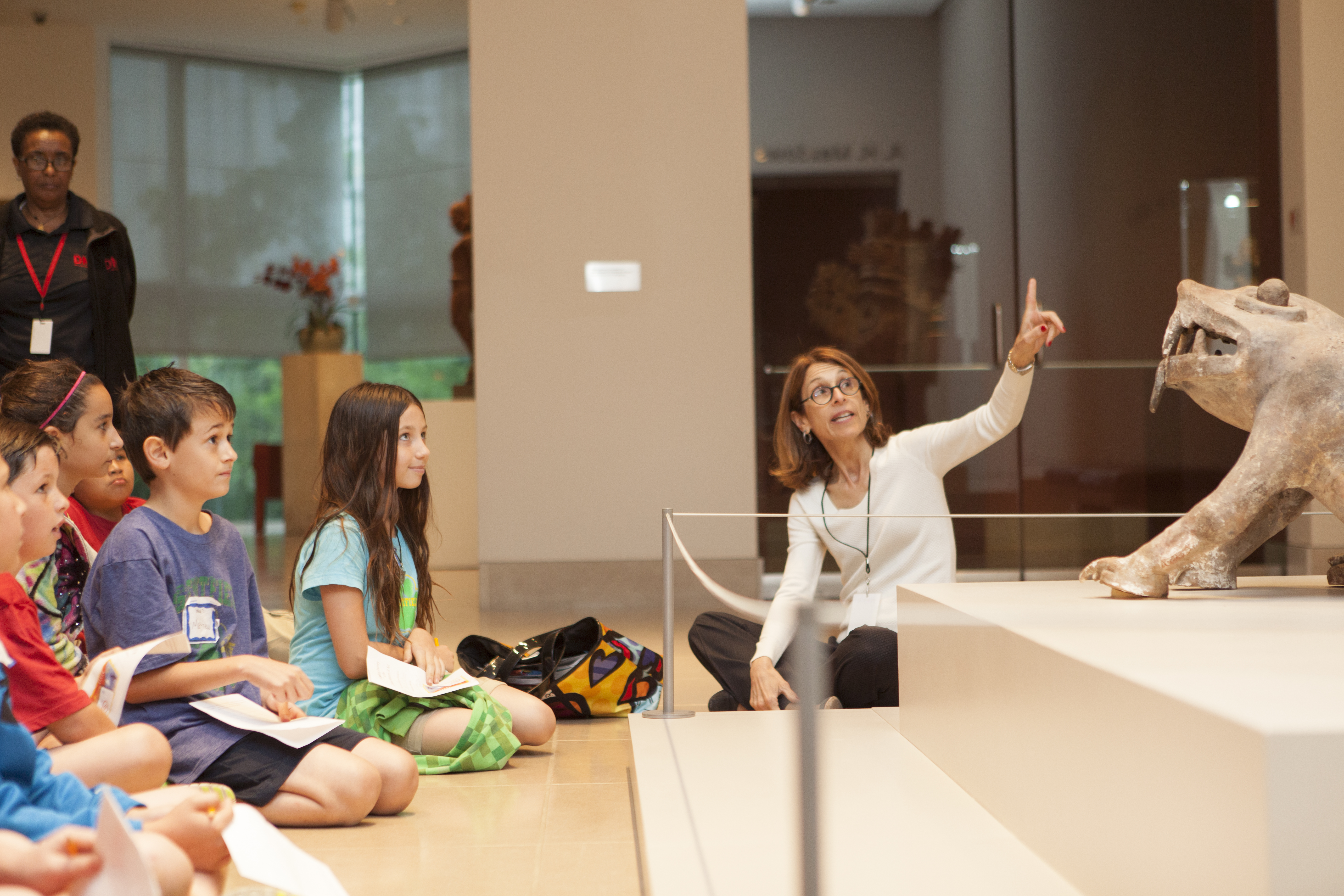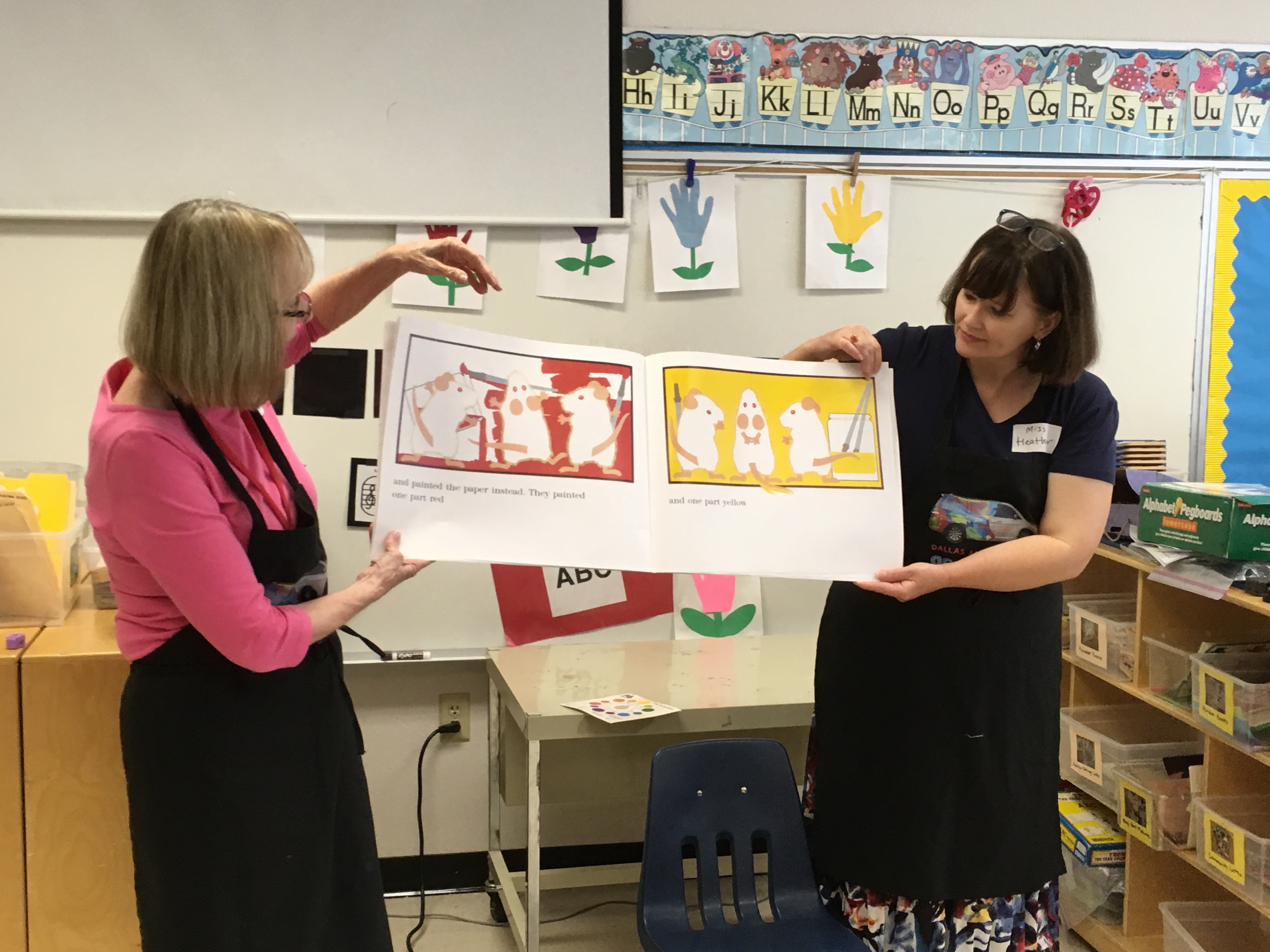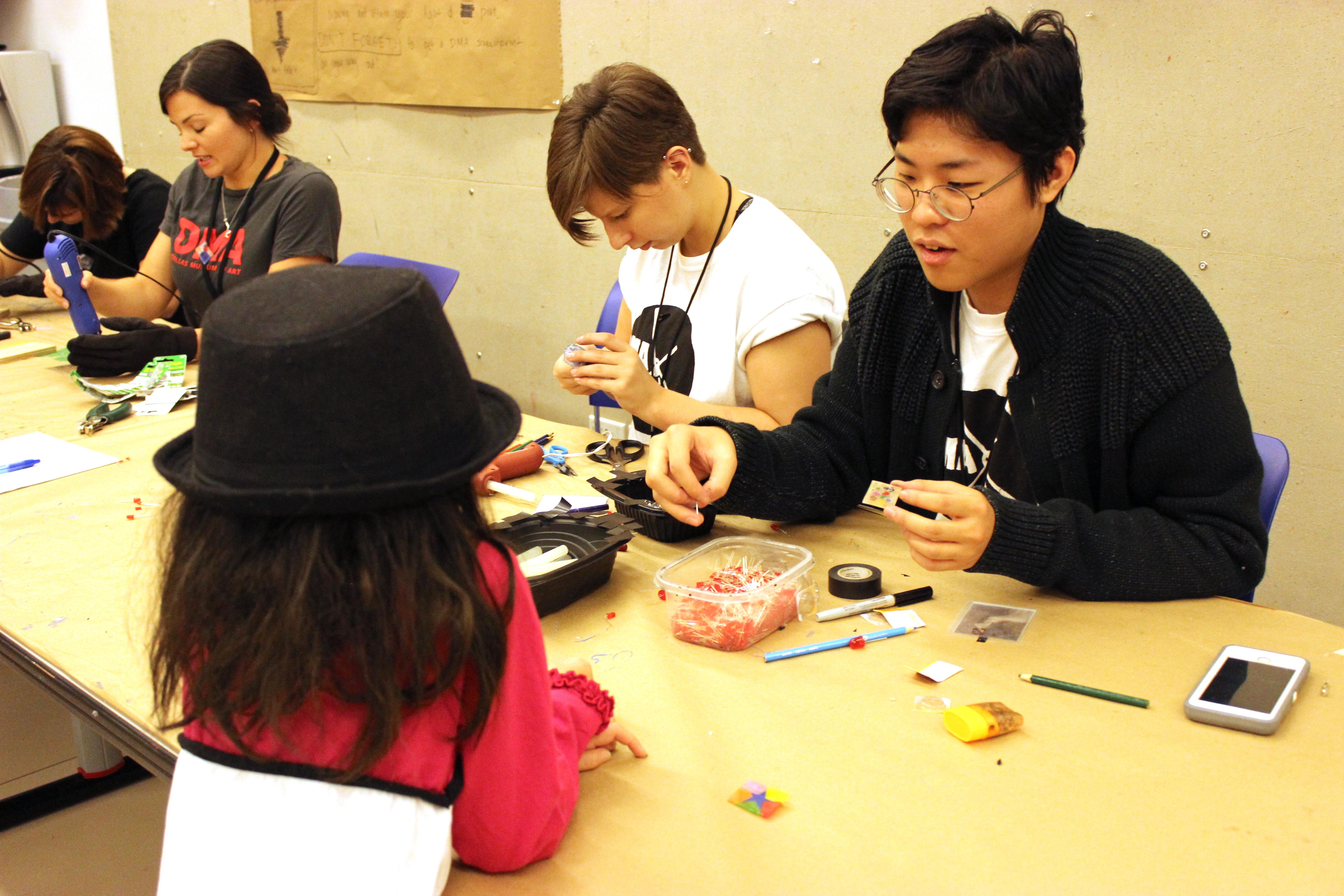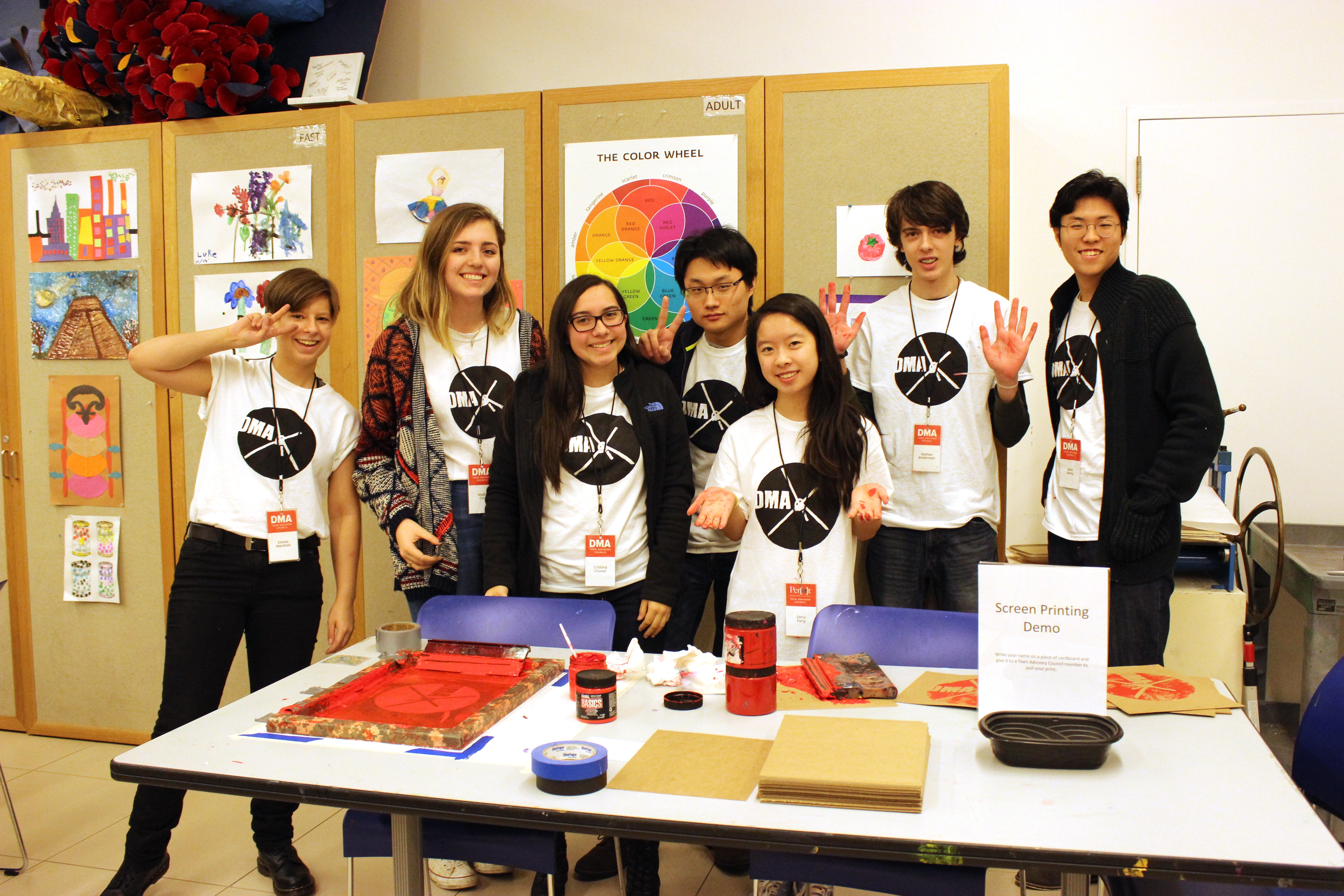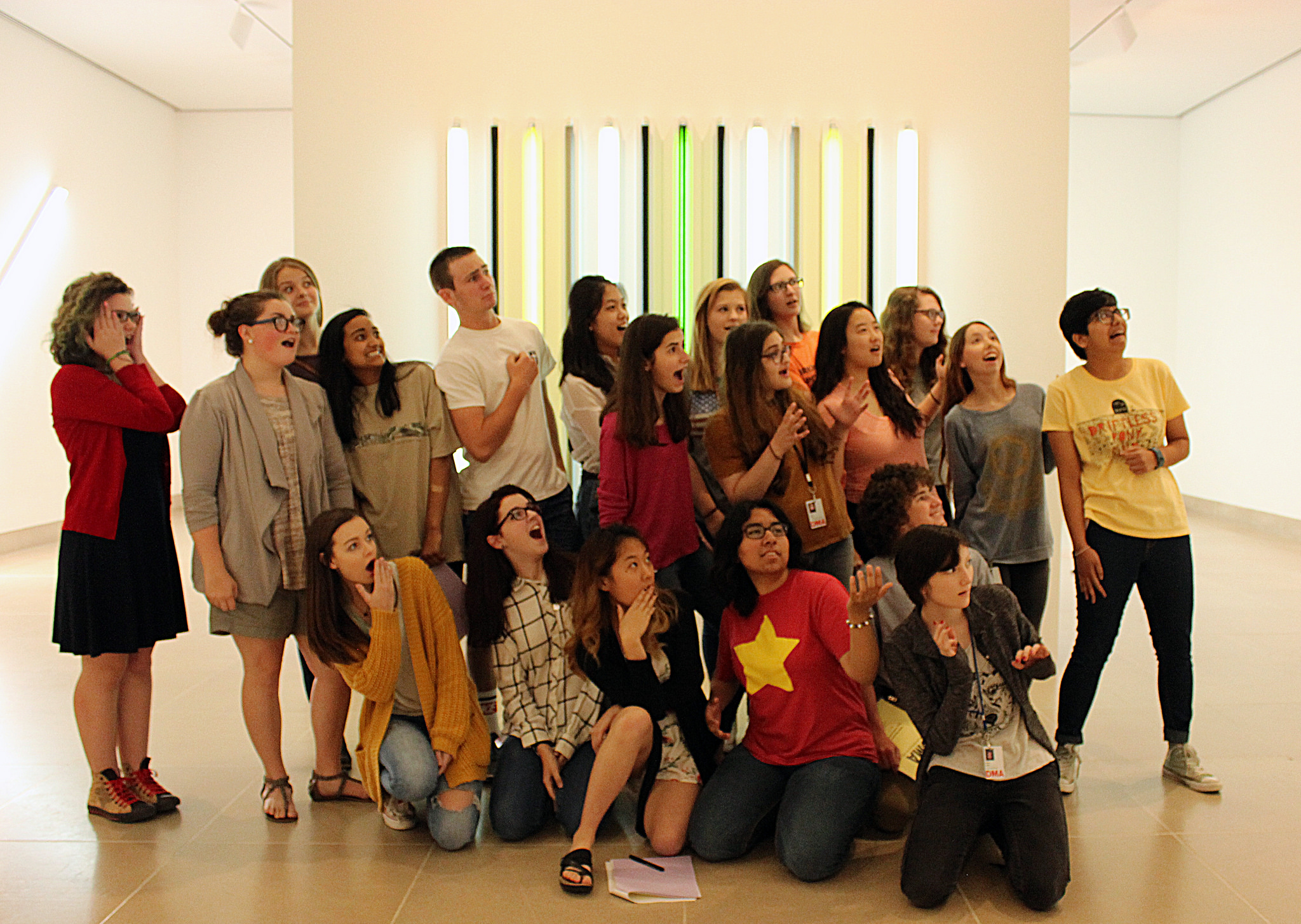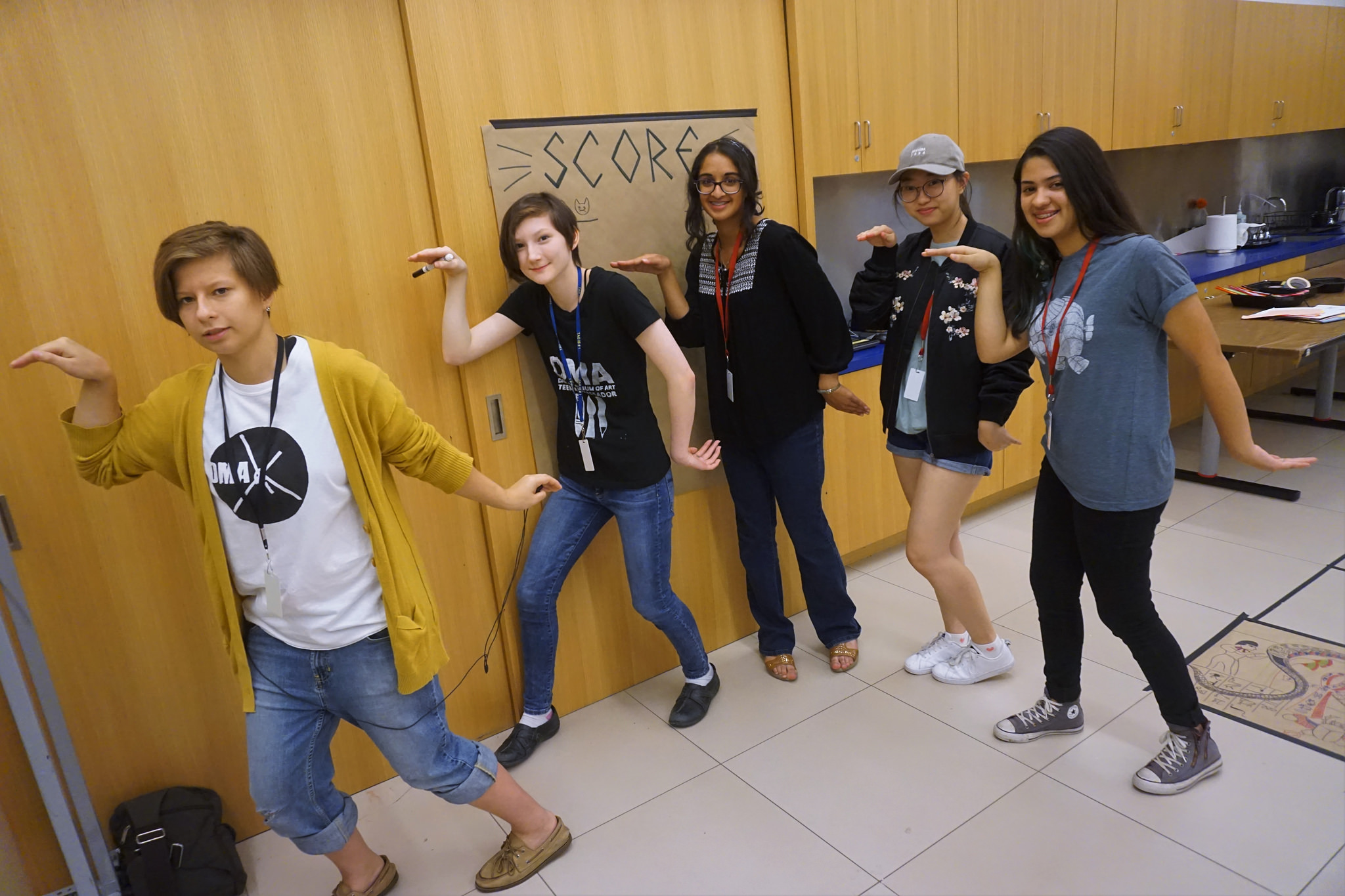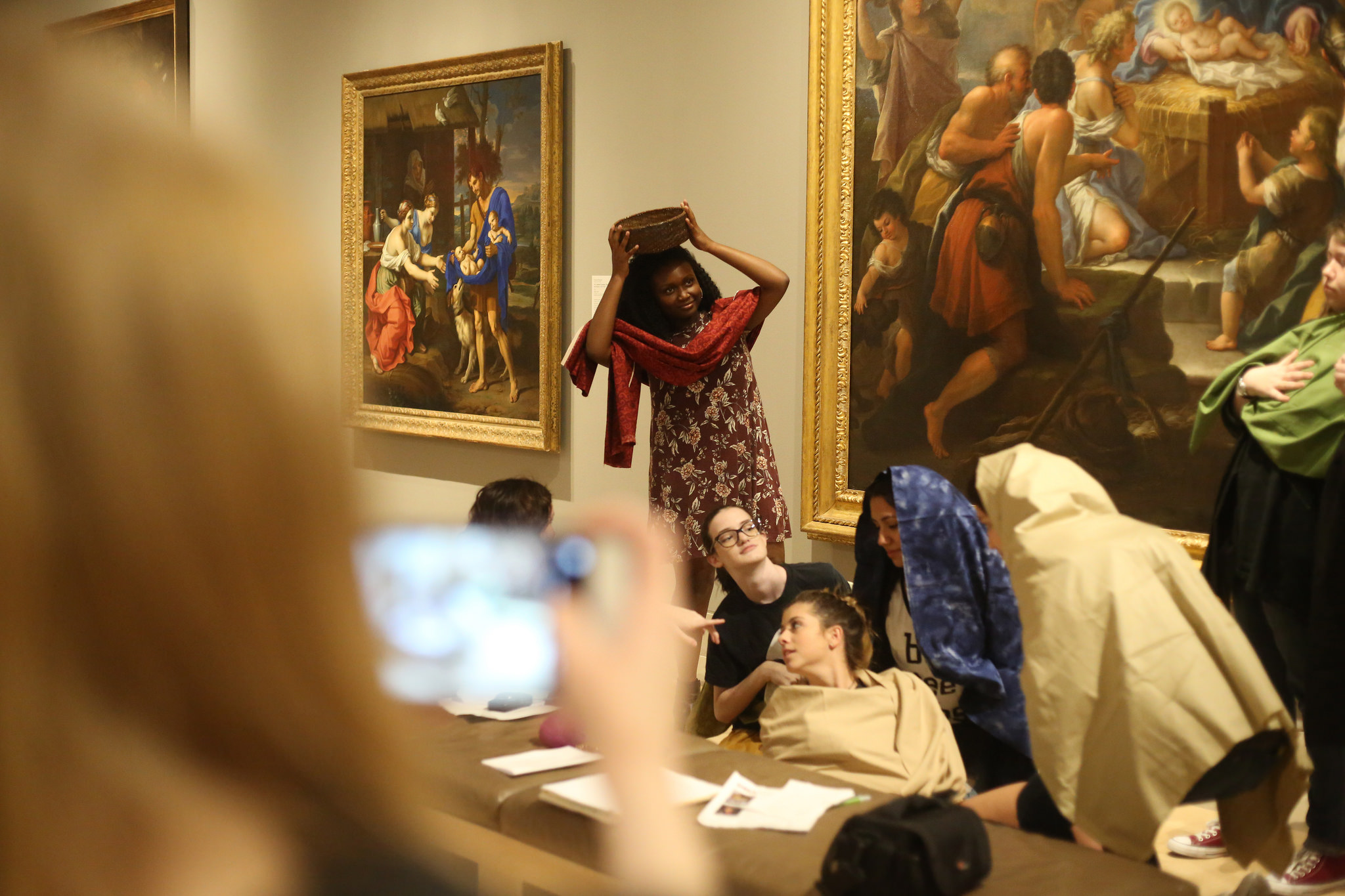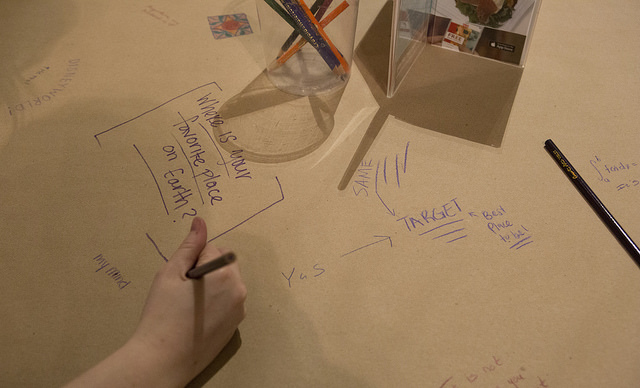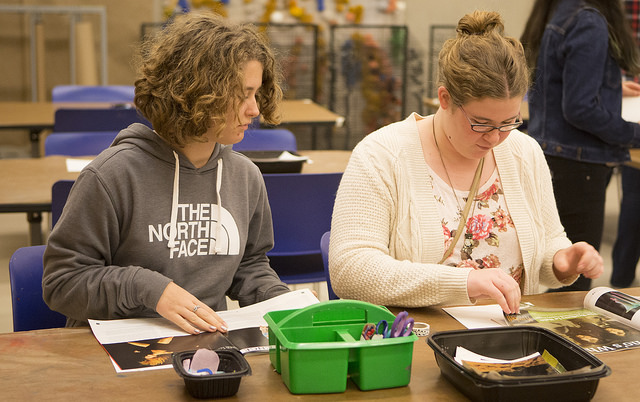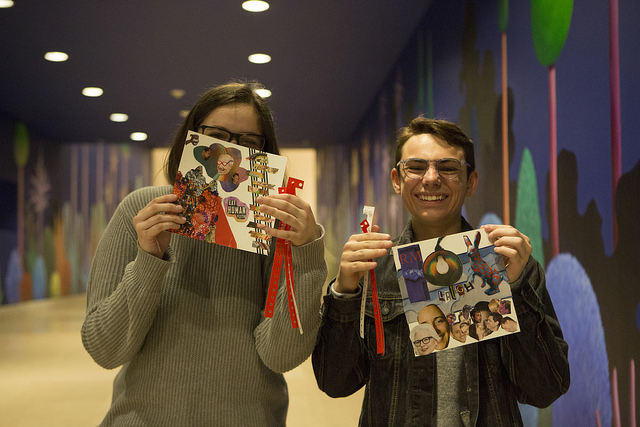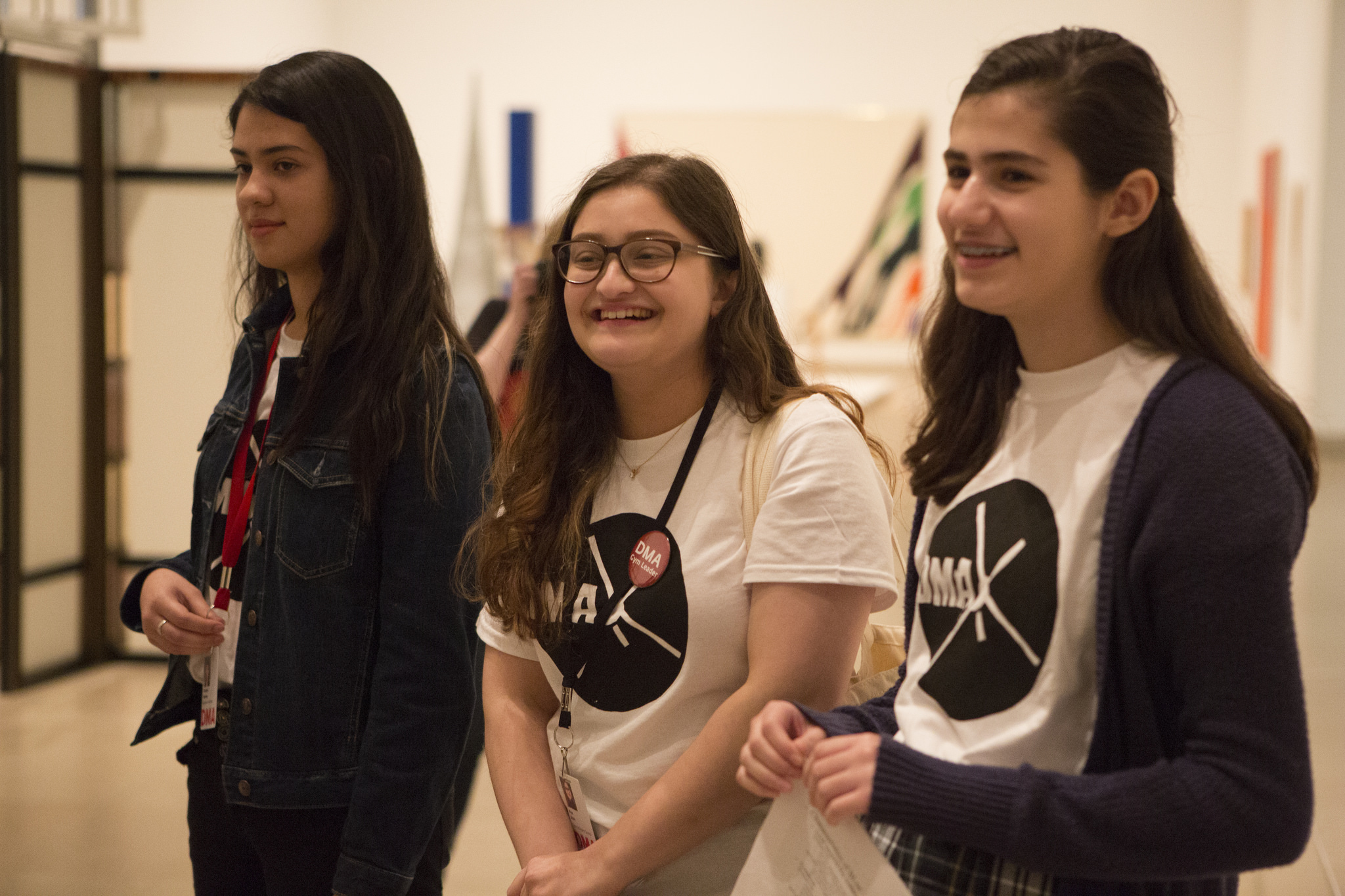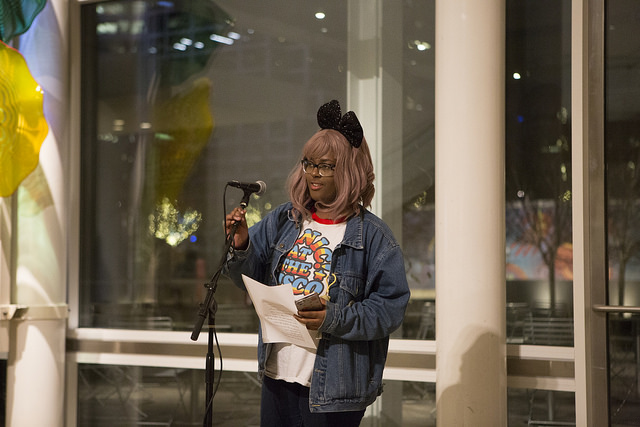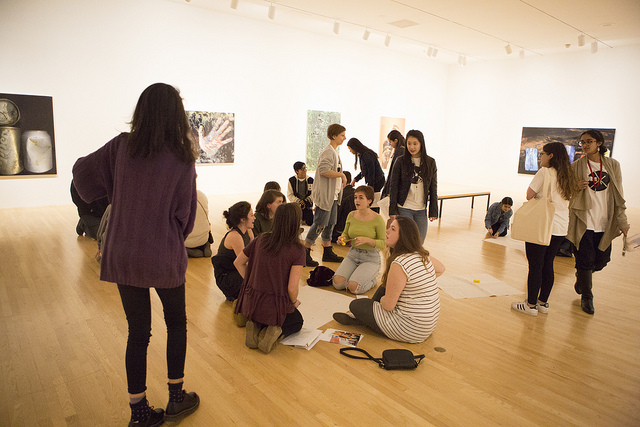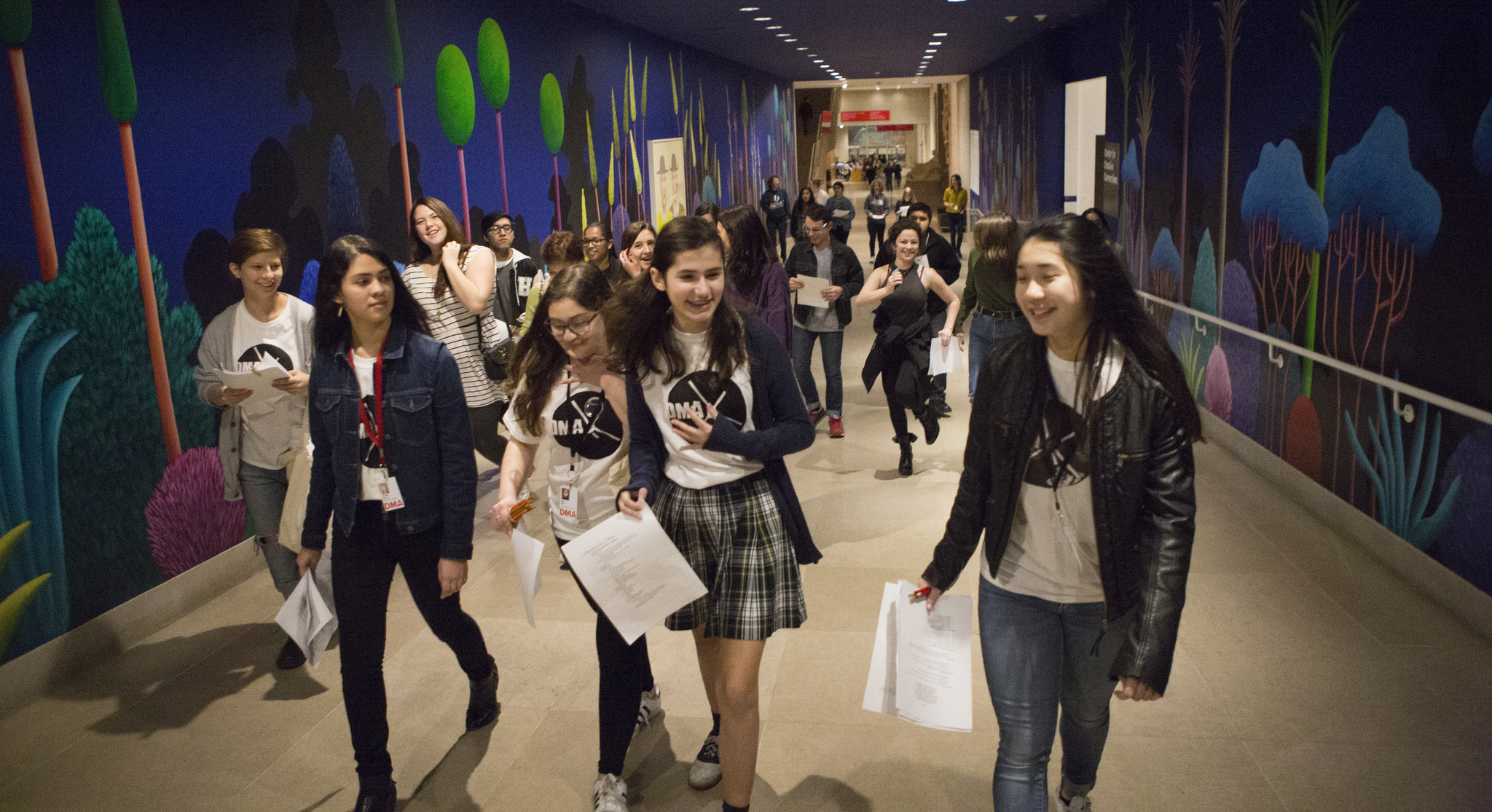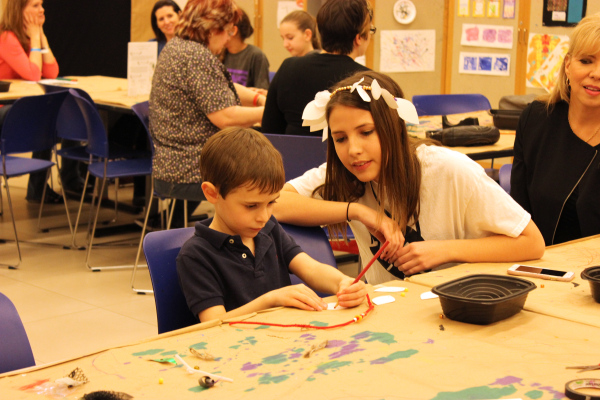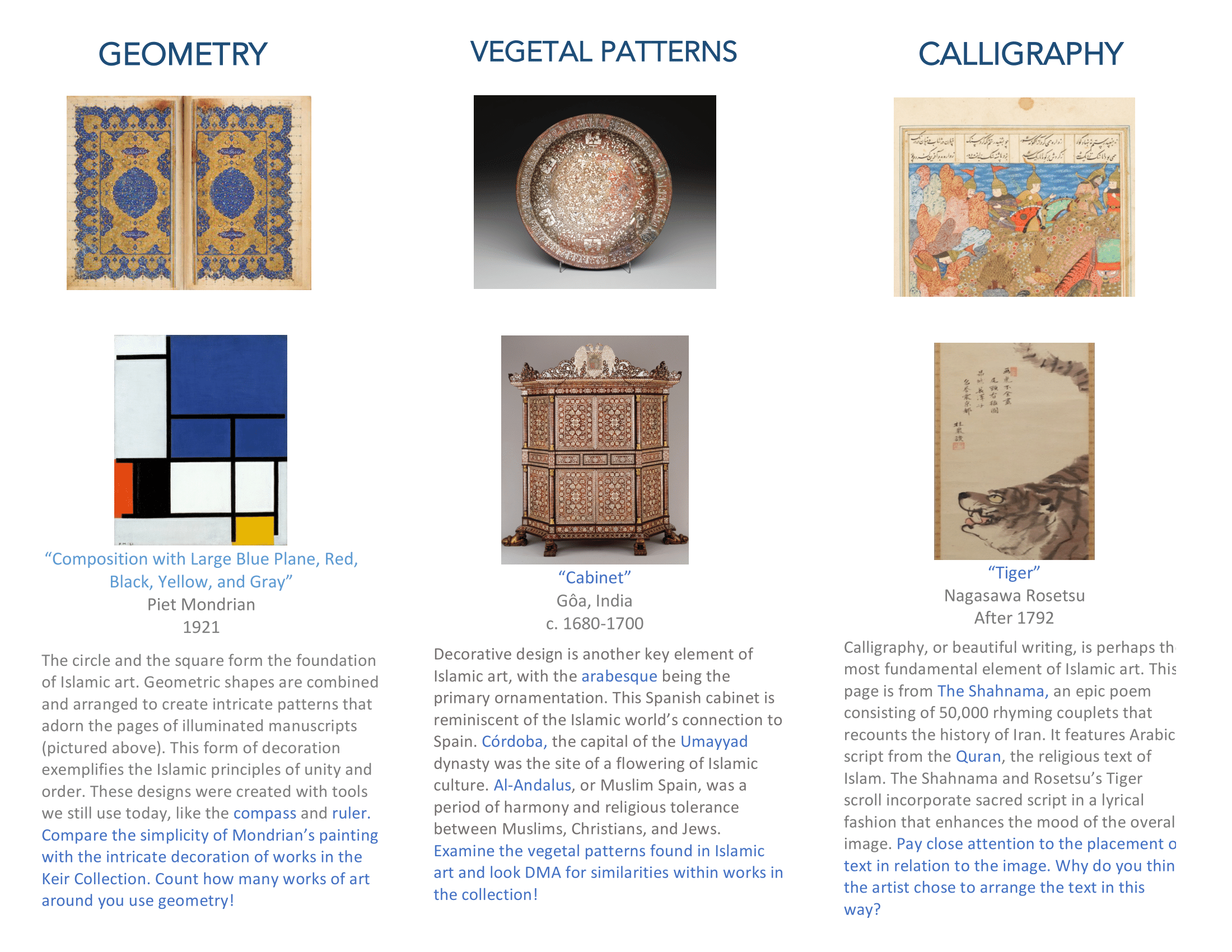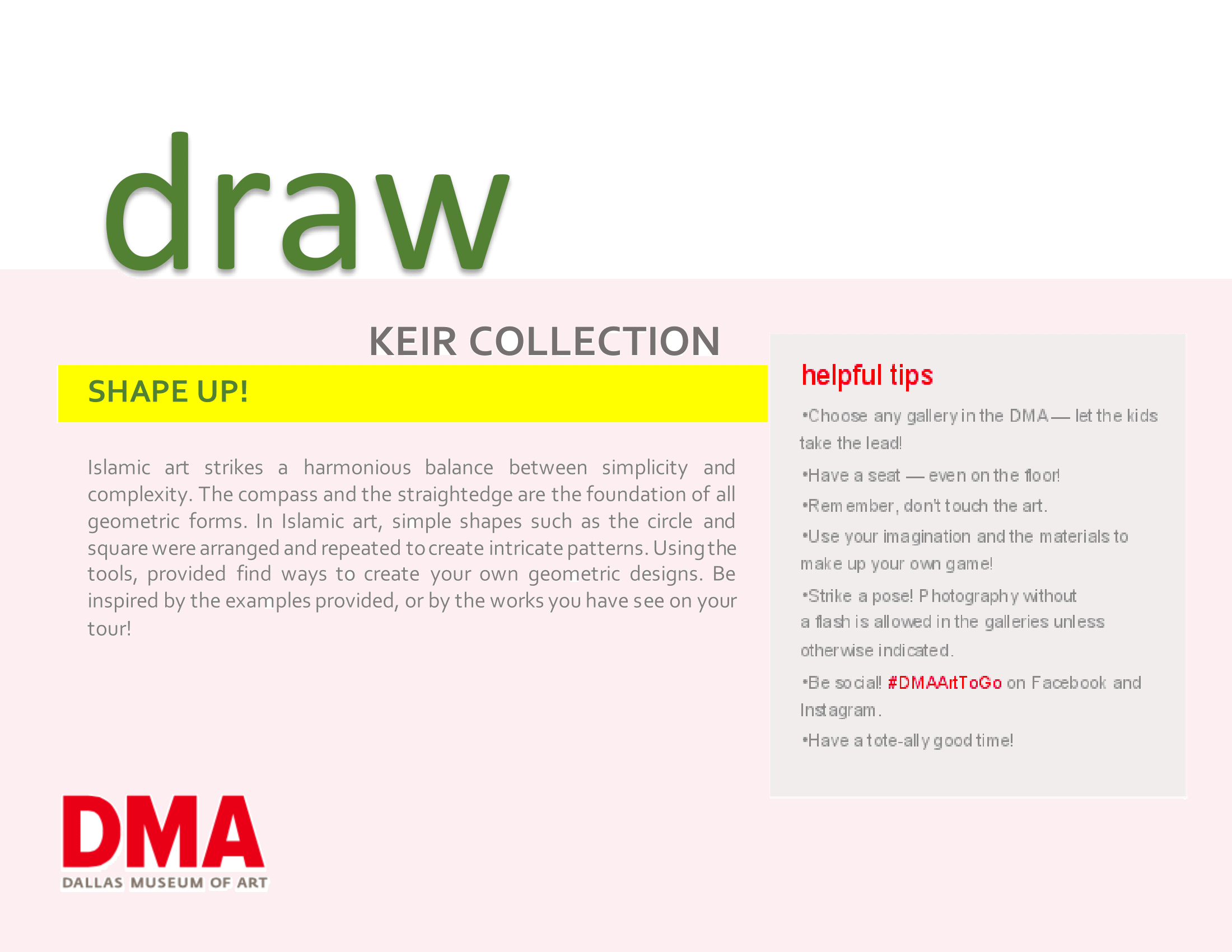From Pop-Up Art Spots to interactive story times, it’s been a great summer for family fun at the DMA! If you visited the Museum this summer to enjoy some of these activities, you’ve likely met one of our friendly and knowledgeable Teen Ambassadors. We checked in with three Teen Ambassadors—Martina D’Orso, Grace Ling, and Aditi Krishnan—to get a recap on how their summer at the DMA went. Grace and Aditi will be sophomores at the School for the Talented and Gifted at Townview Magnet Center this fall, and Martina will be a junior at Booker T. Washington High School.
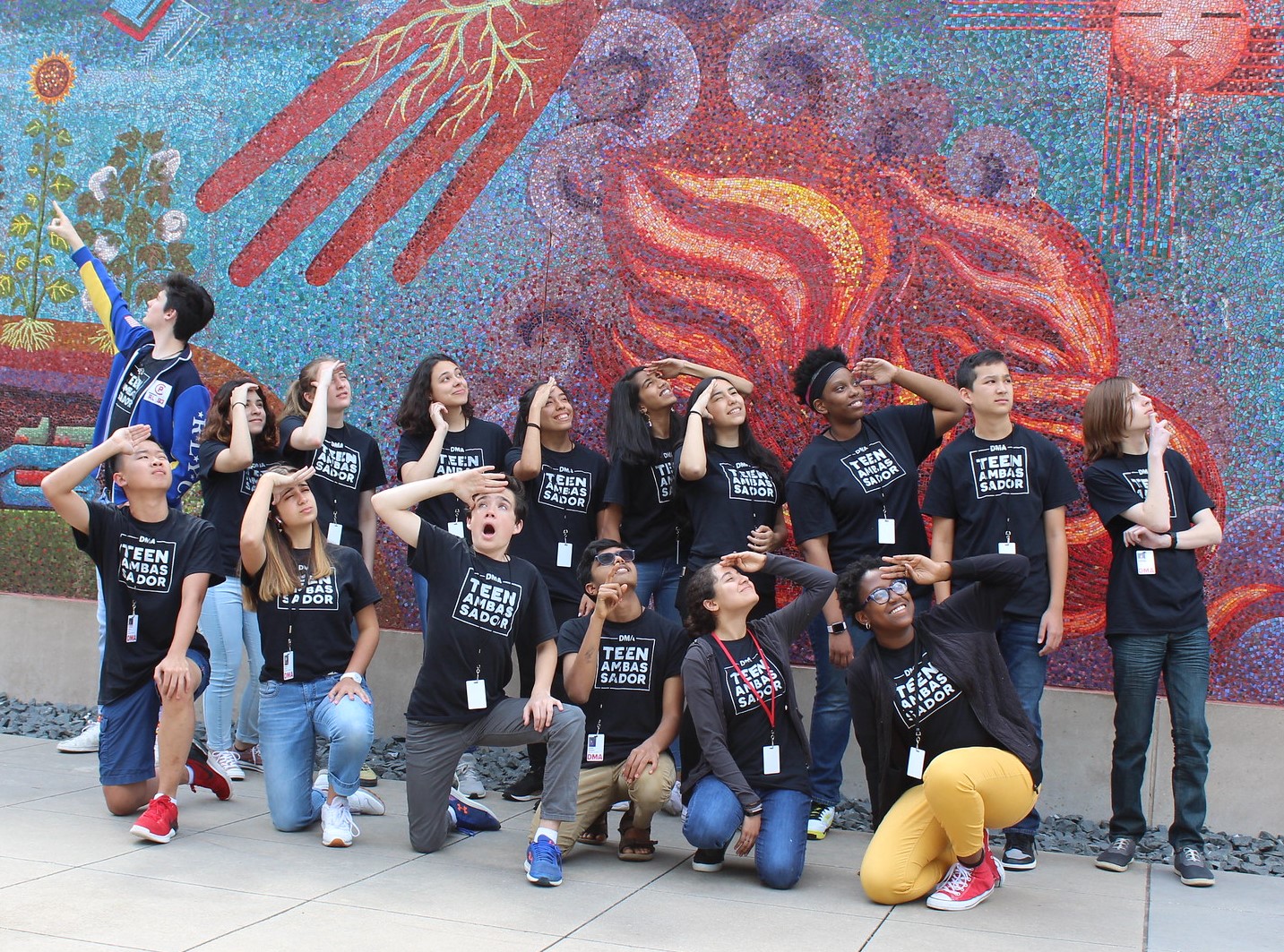
Why were you interested in volunteering at the DMA?
Grace: My mom first took me to the DMA when I was a toddler to attend an art workshop. As I grew up I continued to attend the art programs the Museum offers for different ages and visit the traveling exhibits as well as the permanent ones. I thought that volunteering at a place I often went to as a kid would be a good way to give back and experience the Museum from a different perspective.
Martina: Since I am in the visual arts conservatory at Booker T. Washington High School for the Performing and Visual Arts, I am interested in the arts. I wanted to see what it was like to work in a museum leading tours and helping out during events.
Aditi: I actually became interested in volunteering at the DMA because of a previous Teen Ambassador. Five or six years ago, I came to the DMA with my mom and our first stop was the Center for Creative Connections (C3). The activity we were doing had something to do with recycled materials, and a Teen Ambassador helped me pick my materials and complete my project. She explained the volunteer program to me and encouraged me to join when I was old enough. Since I was pretty young, I forgot that conversation for a while, but when my friend Grace mentioned her position as a Teen Ambassador to me, I remembered my excitement from that day and decided to apply.
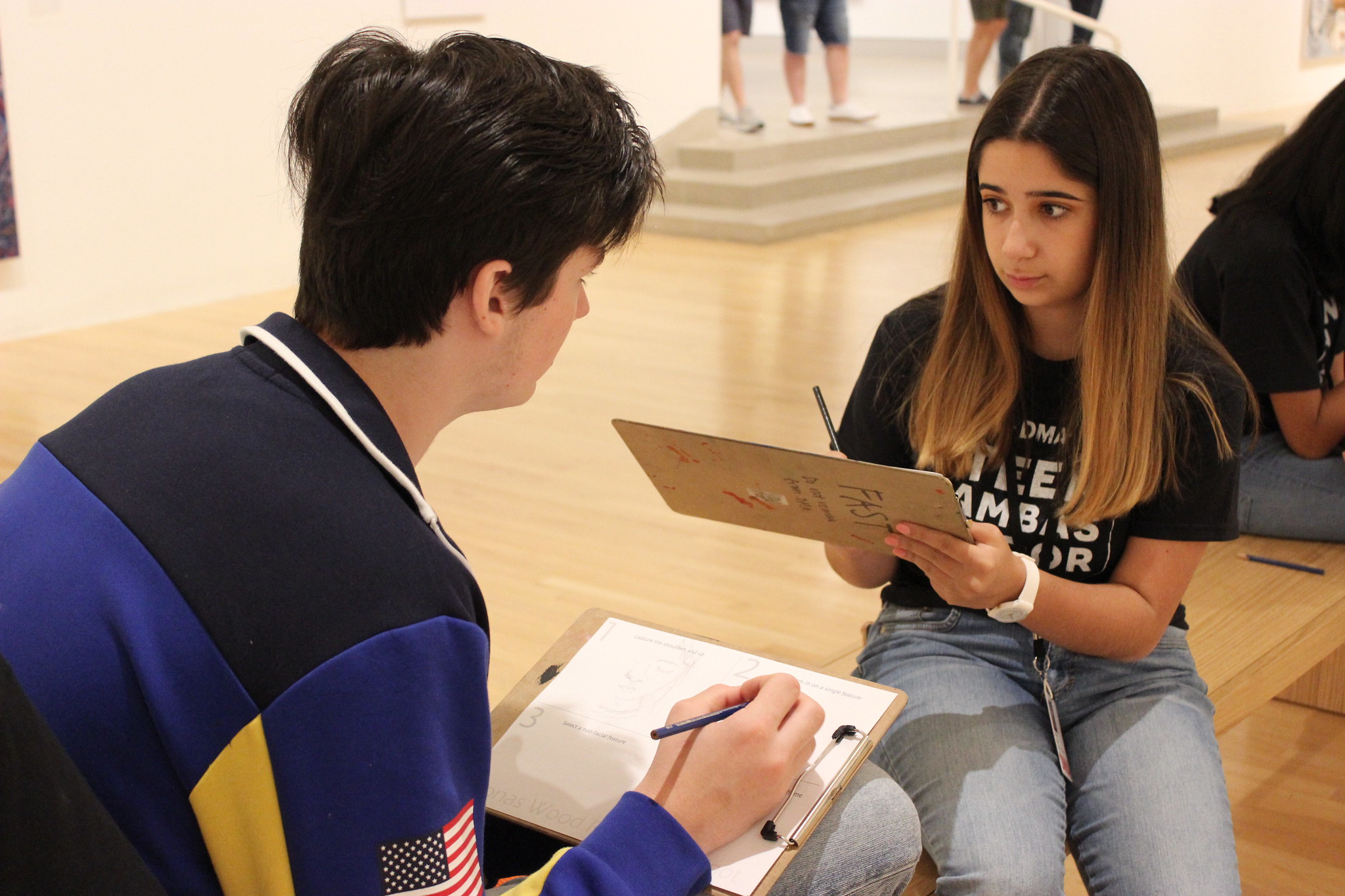
What does a day in the life of a Teen Ambassador look like?
Aditi: Because each day will have different shifts and schedules, each day in the life of a Teen Ambassador is a little different. I tend to sign up for multiple shifts in the same day, so my day starts in C3. Before the Museum opens, I mostly prepare art materials for the visitors. Once the Museum opens, I typically help children with the activities and straighten out any messy stations. I usually get lunch in Klyde Warren Park with my friend and come back to do a Family Tour or Pop-Up Art Spot. My favorite shift is the tour because I get to talk directly to kids and teach them about a work of art in a fun and interesting way!
Grace: My favorite shift is Family Story Time. I love seeing the kids’ reactions to the story, which can range from humor to bewilderment. We conclude each story time with an art discussion and drawing activity where they make their own art inspired by what they learned. It’s cool how reading a children’s book can help make that connection and take art appreciation to the next level, where they use their creative imaginations and think deeper.
Do you have any stories or stand-out moments that have happened to you while volunteering?
Grace: When I was volunteering for the Late Night Pop-Up Art Spot, a lady came to try out a coloring activity and we started talking. She talked about how she used to sew wedding dresses and loved making art. It is interesting to listen to other people tell their stories and share experiences.
Martina: A stand-out moment that happened to me was on a Family Tour. The kids on the tour were so excited and they decided they were going to become friends after about 15 minutes of knowing each other. It was just so sweet how the kids are so nice and friendly to each other no matter what.
Aditi: When my friend and I were hosting a Pop-Up Art Spot in the Jonas Wood exhibition, a group of around 15 kids and a few chaperones came in looking pretty upset. The chaperones told us that they were supposed to attend a Family Tour, but they had gotten the dates wrong, so they had been waiting near C3 with nothing to do. We gave each child a coloring sheet and some colored pencils from the Pop-Up Art Spot and after they finished coloring, we let them take some coloring sheets home. The kids were overjoyed! I especially enjoyed this moment since coloring was all it took to make the kids happy.
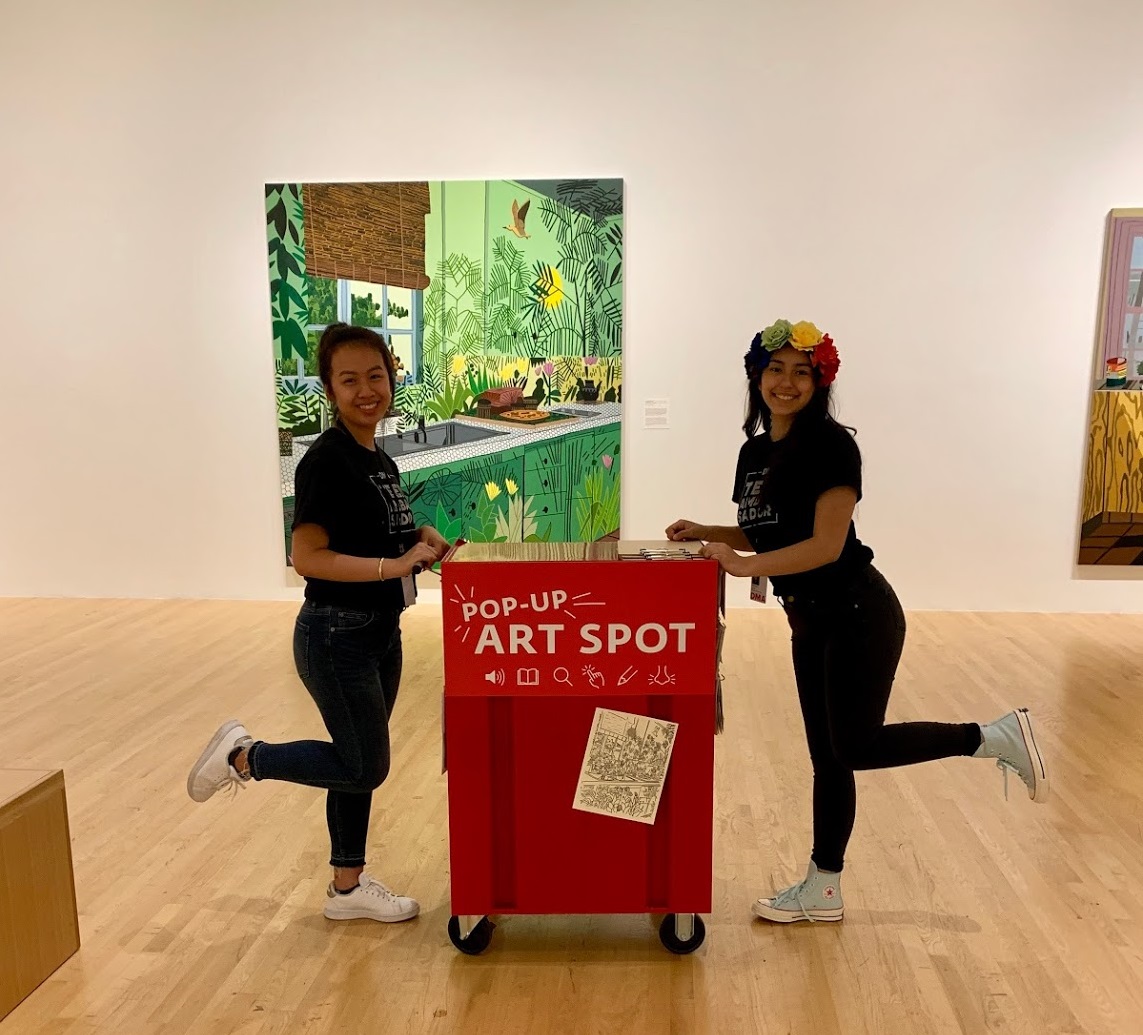
Why should someone be a Teen Ambassador?
Grace: It is a great opportunity to practice communication skills, meet new people, learn about art, have fun, and contribute to the museum visitor experience.
Martina: It is an enriching experience that helps you understand how life in a museum works. You learn facts about artworks that you wouldn’t have known just by walking around the Museum alone. Additionally, you are able to learn how to talk and interact with people, which is a great skill to learn if you are a bit more introverted.
Aditi: I think one should be a Teen Ambassador because of the fun you have. You get to enjoy and appreciate the art around the DMA and help other children do so too! Teen Ambassadors also get to teach little kids about art in an exciting and entertaining manner, as opposed to just spitting out facts. You also get to meet new people and make friends with others who are interested in art as well. Lastly, the communication and collaboration skills you develop as a Teen Ambassador are essential for almost every career.

Applications for the DMA’s summer Teen Ambassador program will open in March 2020. If you’re interested in staying involved with the Museum during the next school year, consider joining the Teen Advisory Council—applications are due by August 19!
Got questions about the volunteer opportunities for teens at the DMA? Email teens@DMA.org and we’ll get right back to you!
Jessica Thompson-Castillo is the Manager of Teen Programs at the DMA.
